We are back! Jennifer Janeksela, the oldest of our five children, returned to Greece with us. She is visiting for two weeks and we couldn’t be more delighted!
When we last wrote, we were at D-Marin Marina in Lefkada on the Ionian Sea. We were still figuring out what our itinerary would be while Jennifer was with us, but she helped out by letting us know that she wanted to go to Antipaxos and Paxos (which were on our list as possibilities). Wow, am I glad we did!
But I jumped ahead. Let’s get back to the start of our trip with Jennifer.
We flew into Athens upon our return from the US. We visited the Acropolis (Jennifer’s first time, and I was happy to go again) and the Ancient Agora of Athens (ditto). But this trip we also added a visit to the Acropolis Museum, and was it ever interesting and informative!
I want to call out our lodging in Athens. We stayed at the Hotel Parthenon, which was the PERFECT location – walking distance to the Acropolis, Ancient Agora, Acropolis Museum, and numerous restaurants – and a lovely hotel to boot! Stay there. 🙂
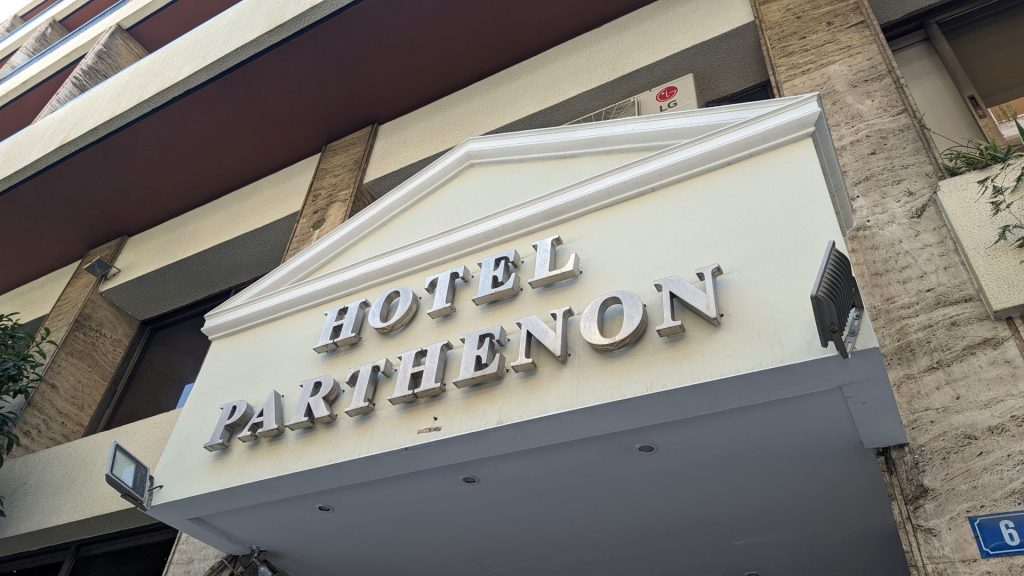
Here are a few pictures from our visit to the Ancient Agora. (I posted pictures in a previous post, so these are just a few new ones.)
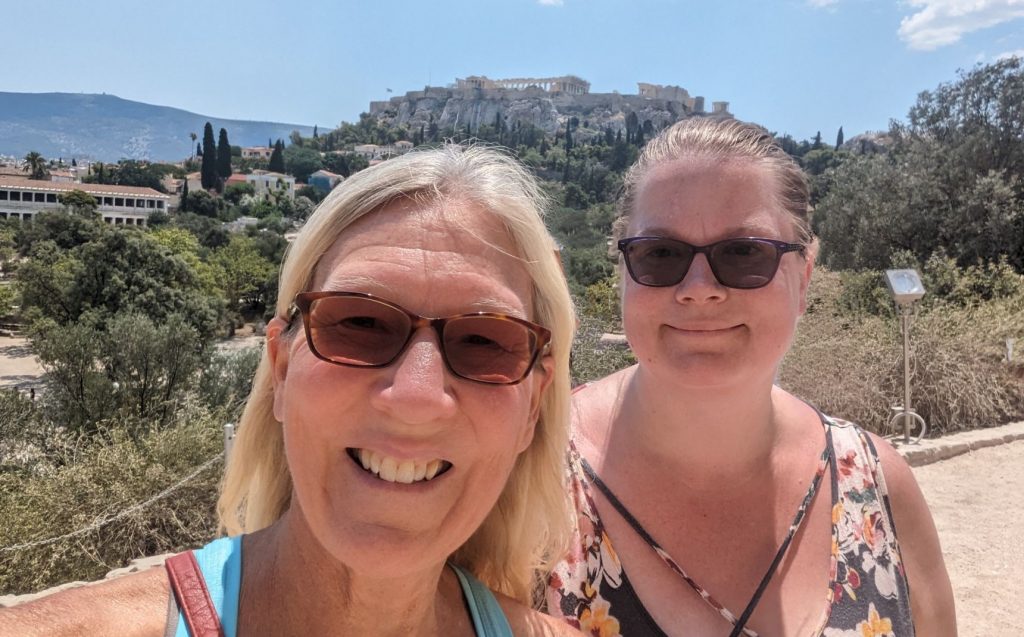
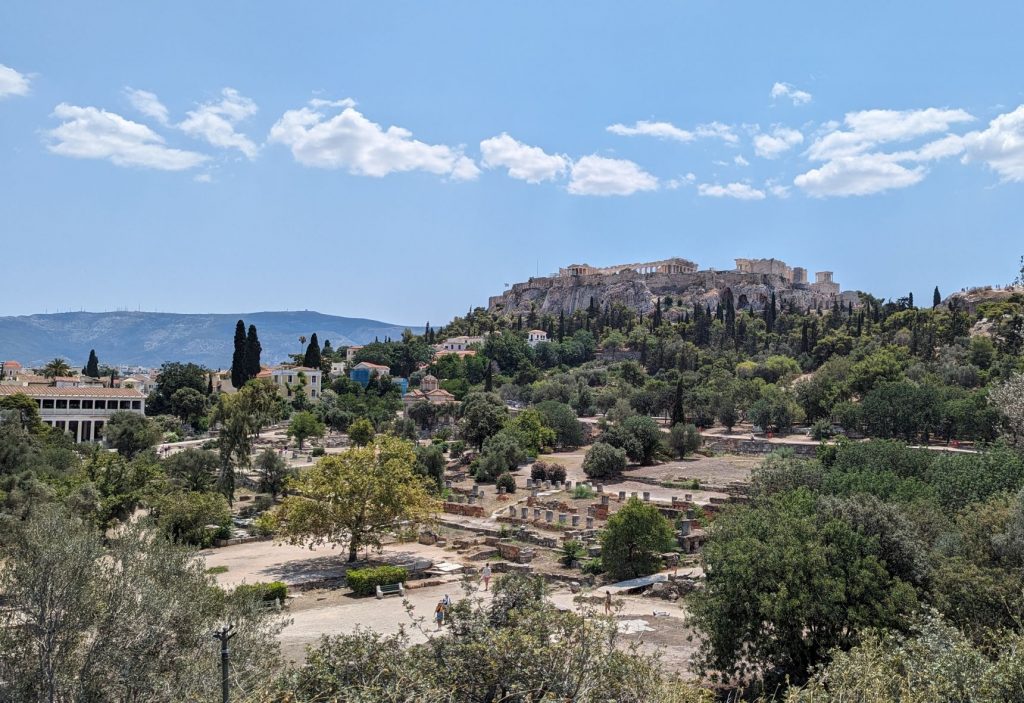

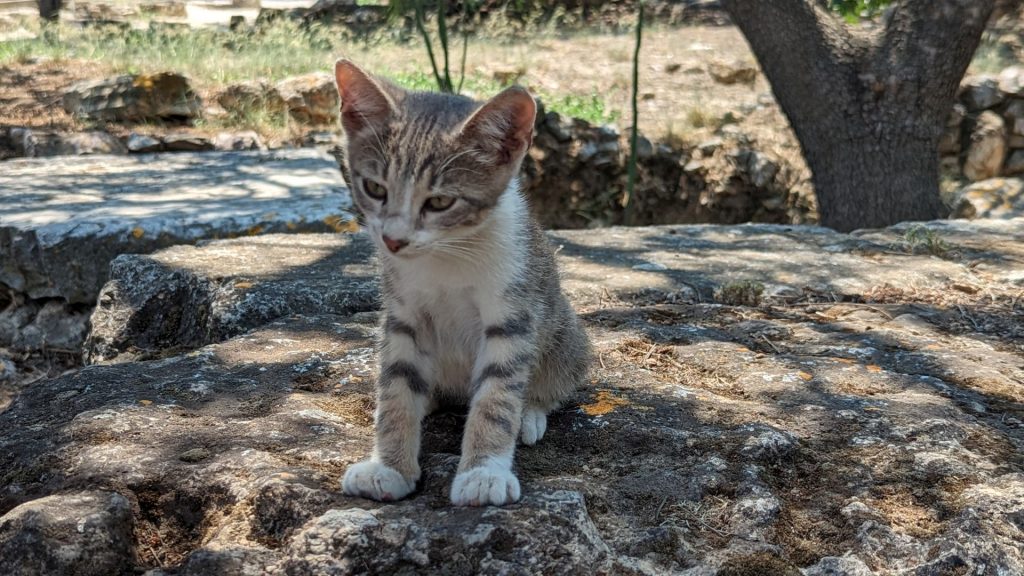
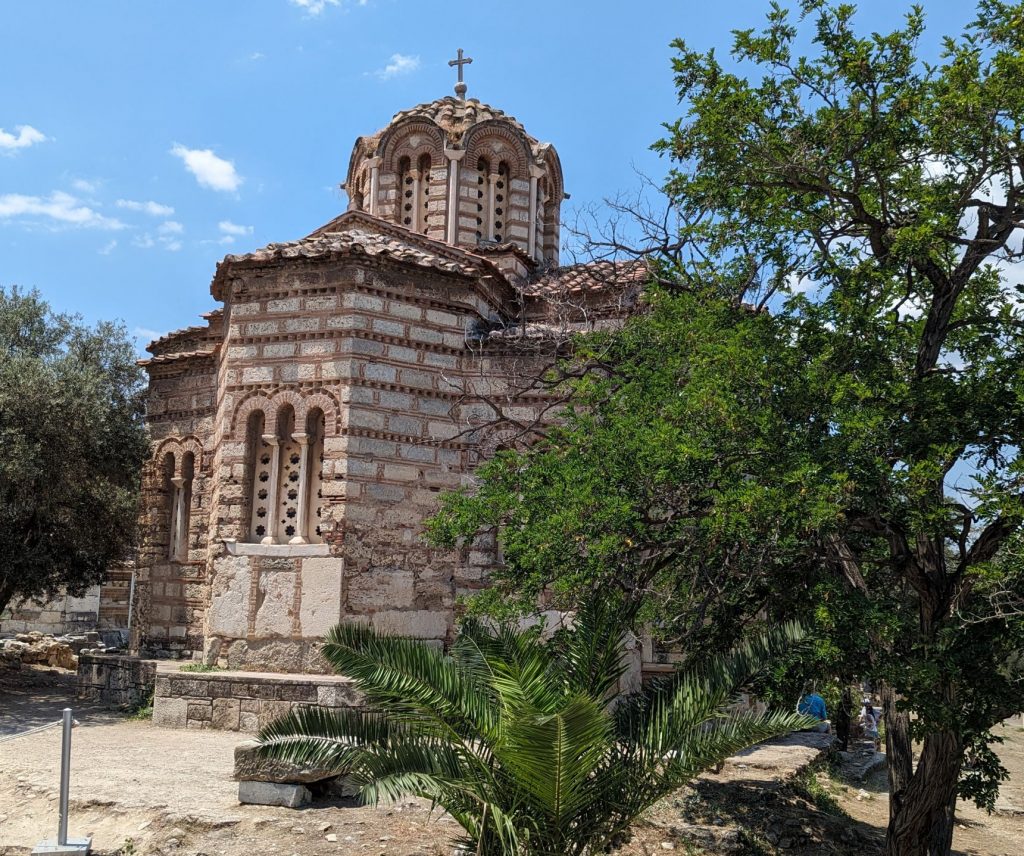
The following pictures are from the Acropolis Museum. I highly recommend it if you are in Athens.
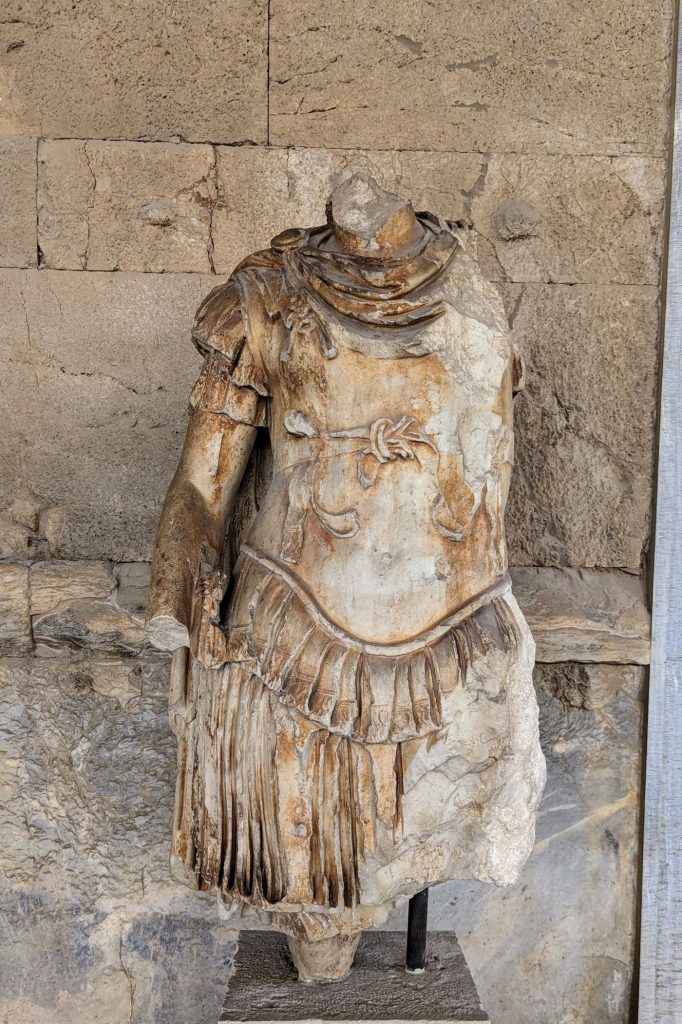
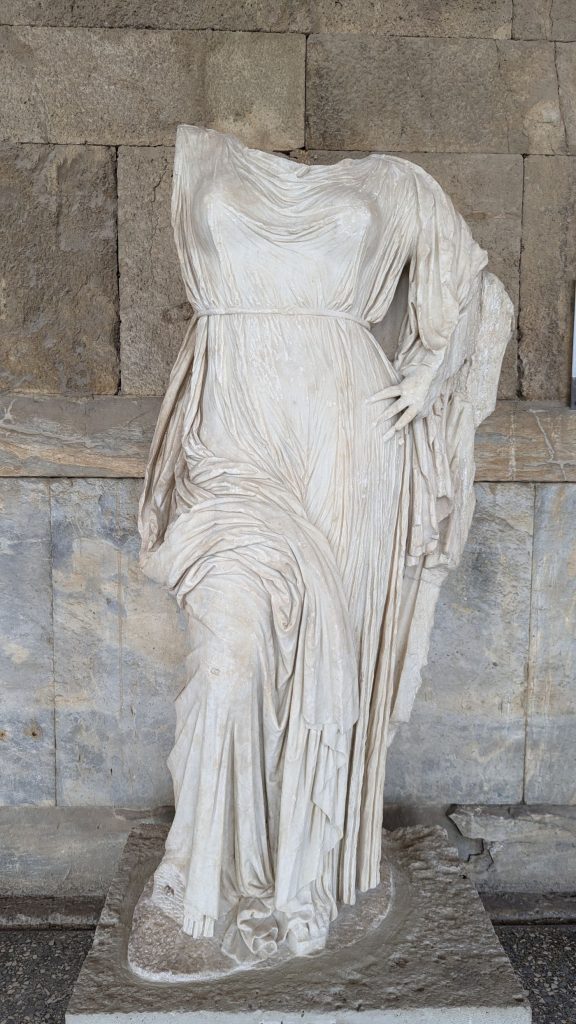
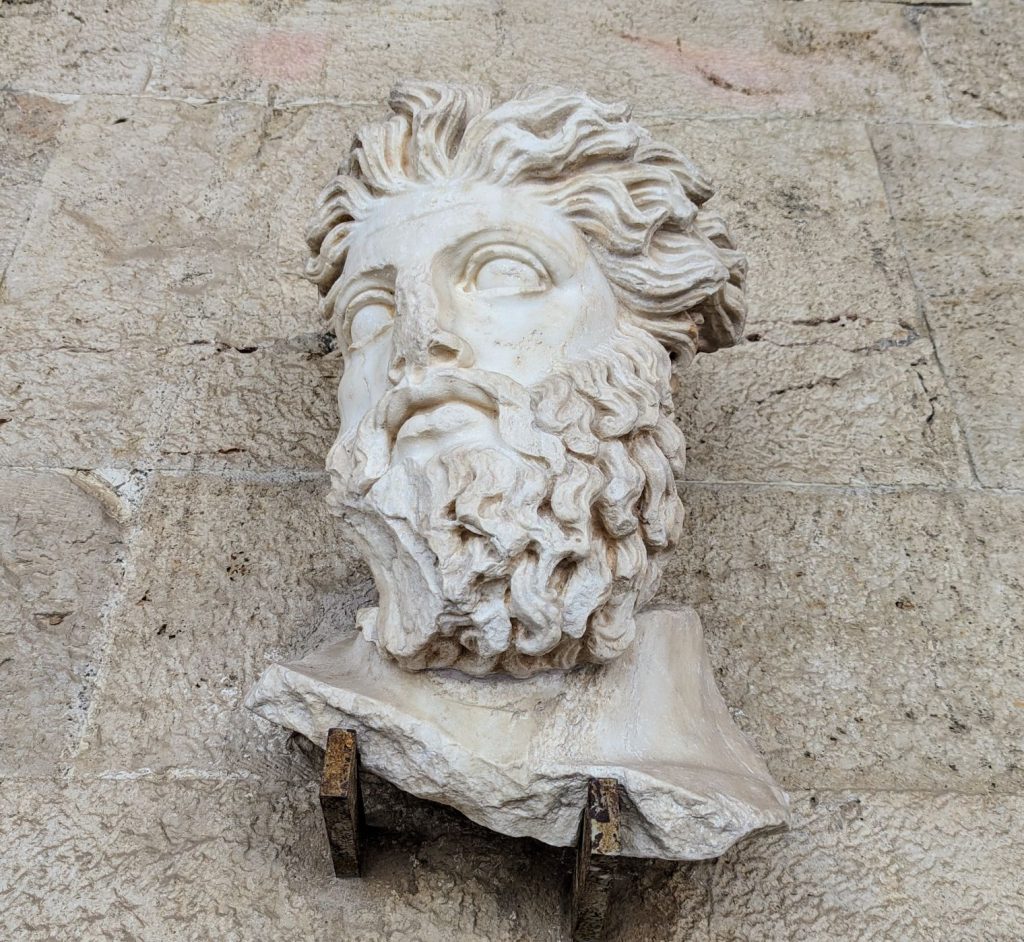
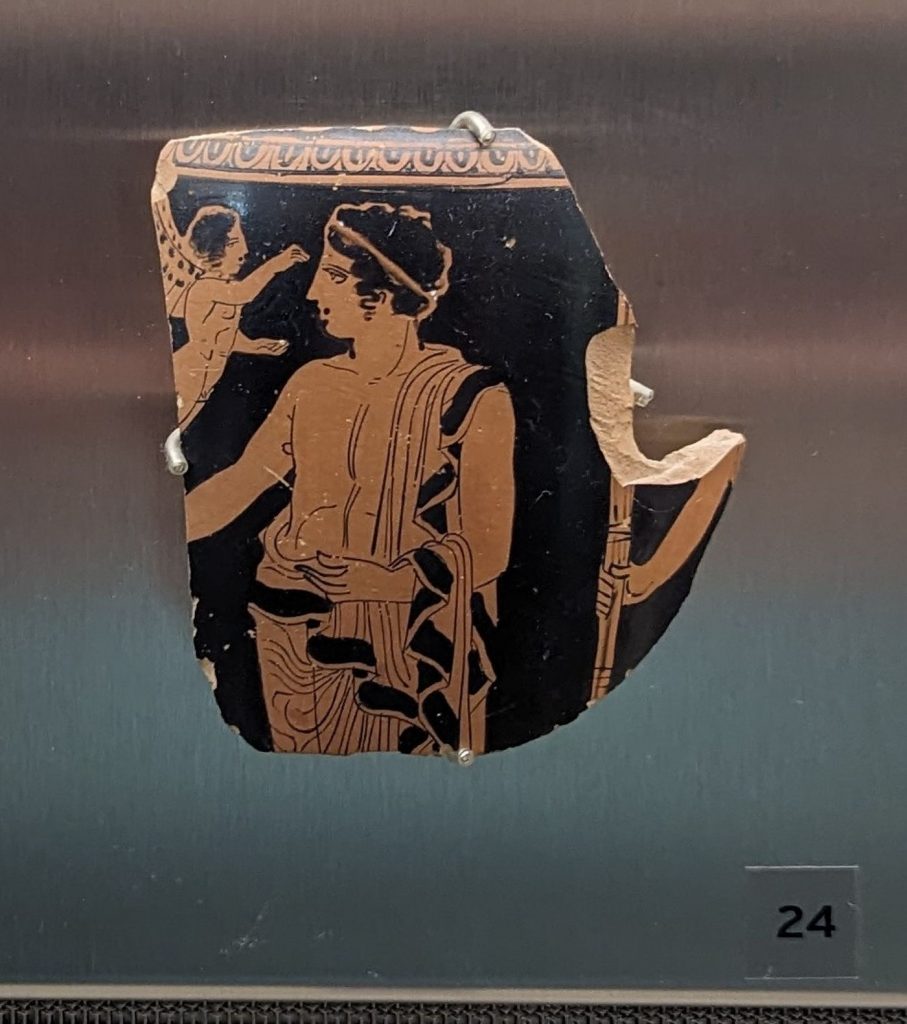
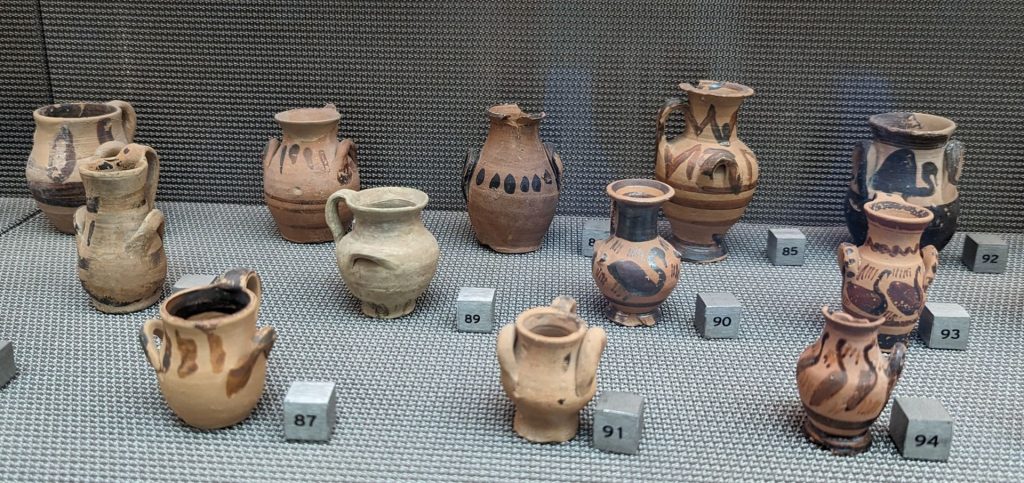
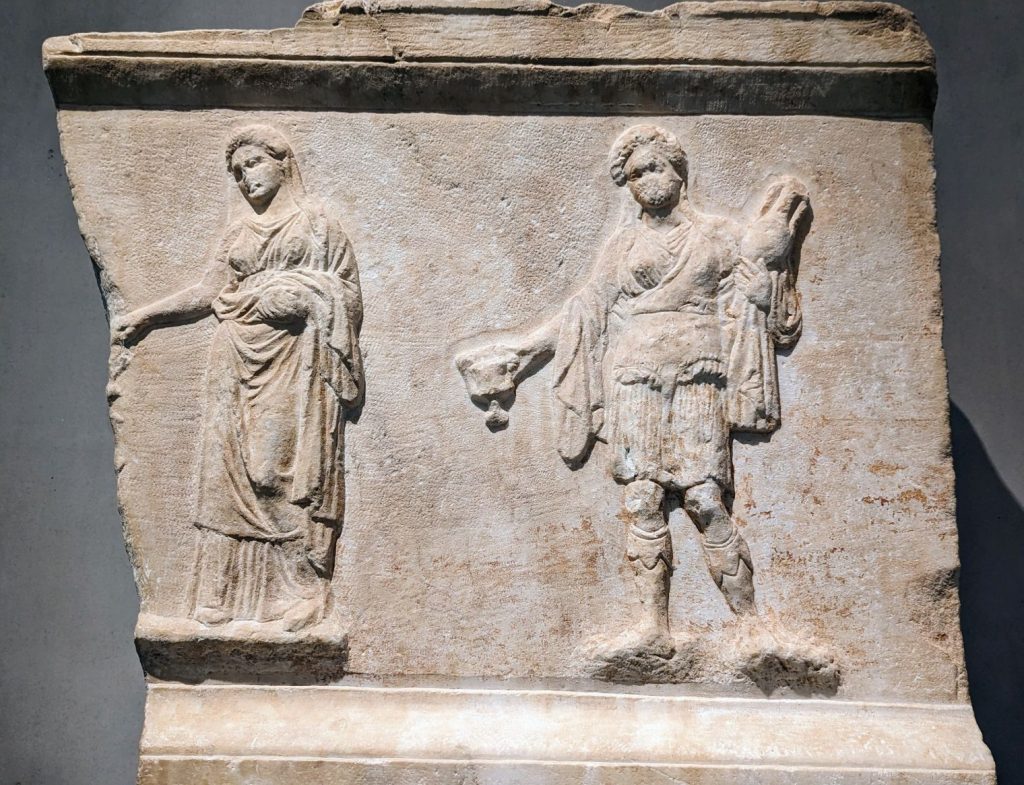
The next picture is of Gorgon. According to Senteniae Antiquae, “The Gorgon’s face is one of the most recognizable symbols from antiquity, adorning everything from vases and cups to temple pediments and metopes to confront the viewer with her petrifying stare and snaky ropes of hair. While the apotropaic function of the Gorgon is usually attributed to the directness of her gaze (one that is highly unusual in Greek art), depictions of Gorgons–including their most famous representative, Medusa–in archaic art frequently include an additional provocation in the form of a tongue. Long and lolling, often poised between vicious-looking canine teeth, this aspect of the Gorgons’ iconography has conventionally been interpreted as a way to enhance her grotesqueness.”
Every Gorgon we saw at the museum had a tongue prominently displayed.
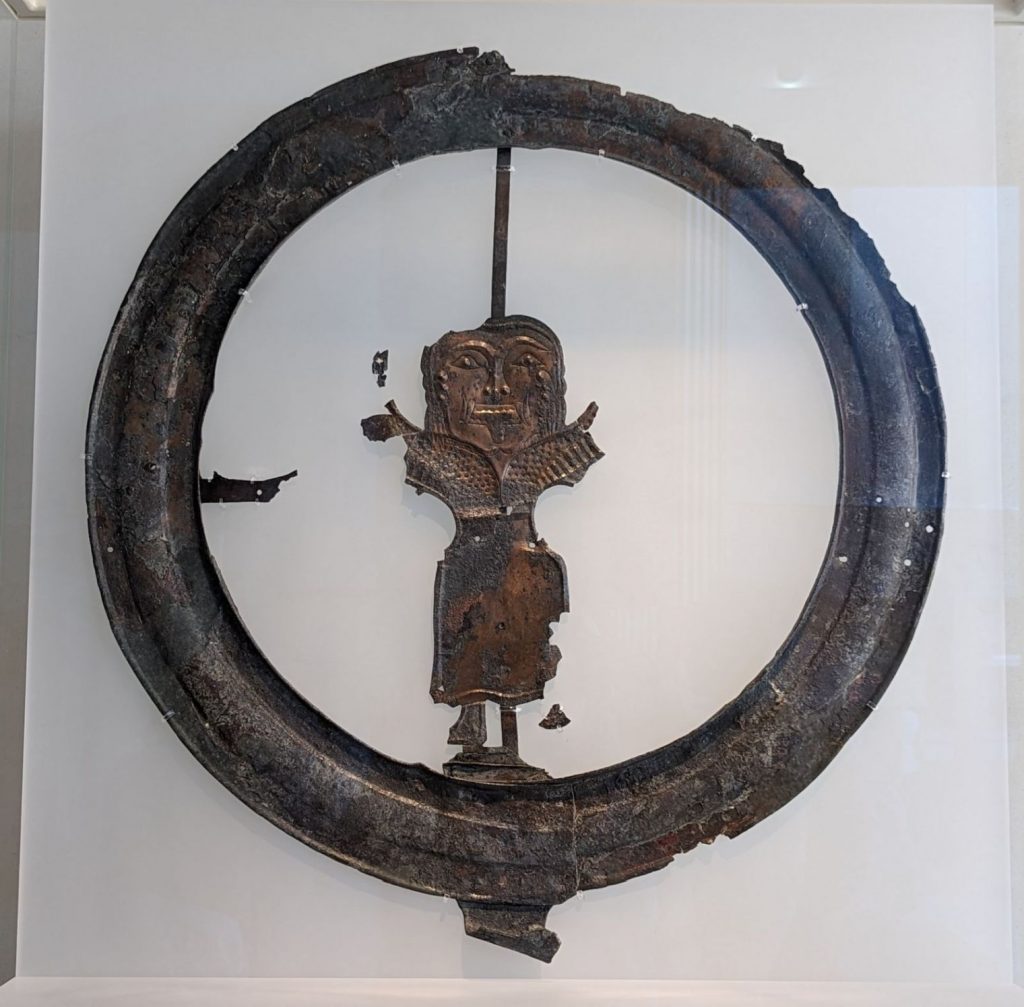
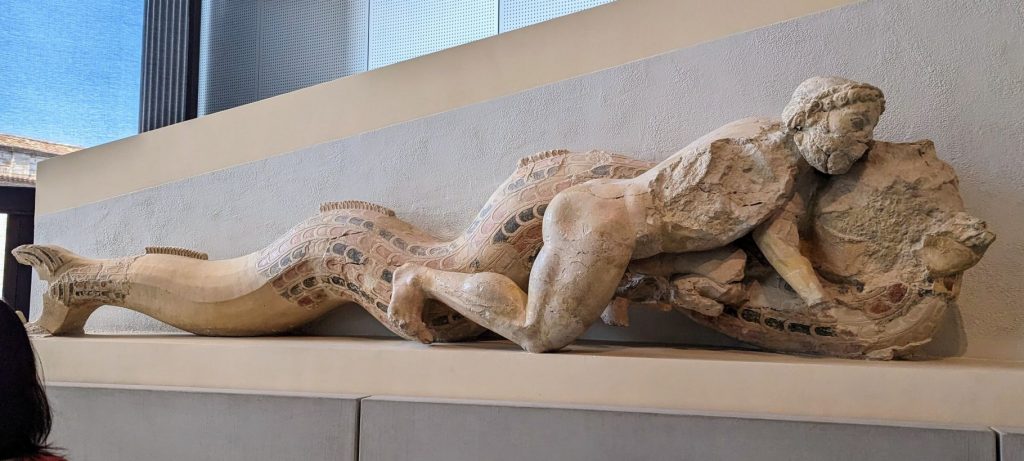
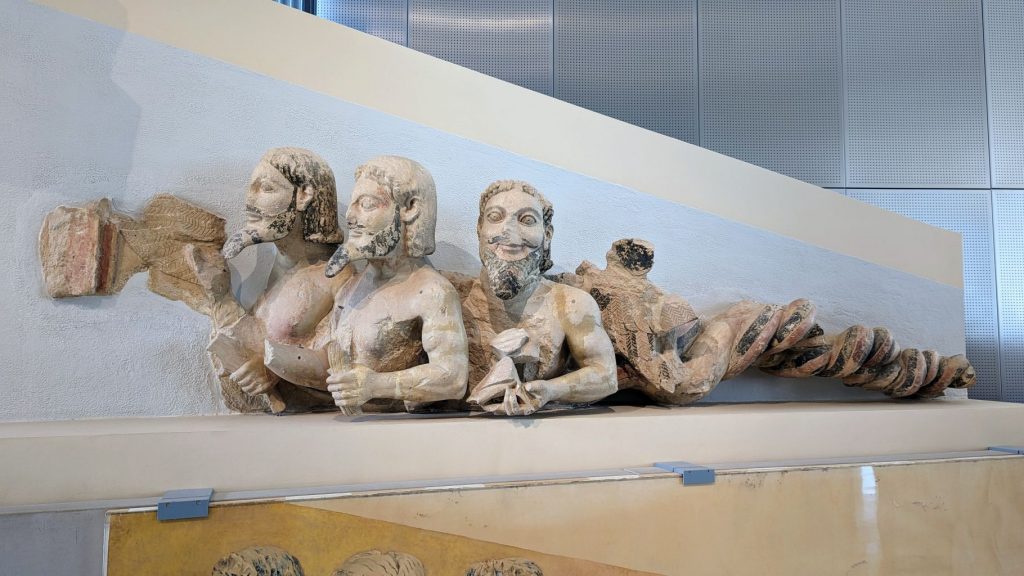
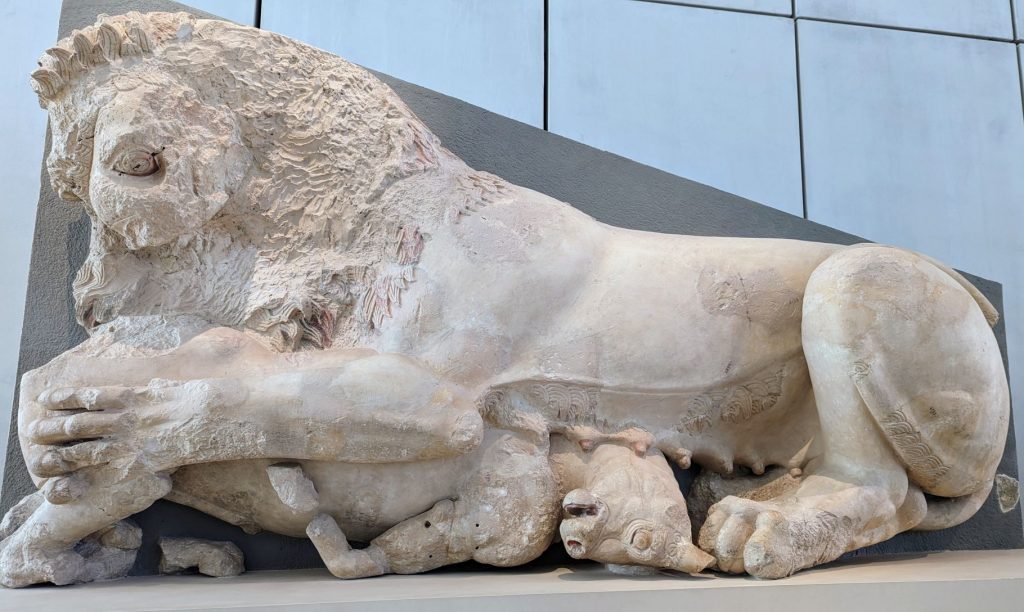
Just a few more pictures and we will move on from the museum.
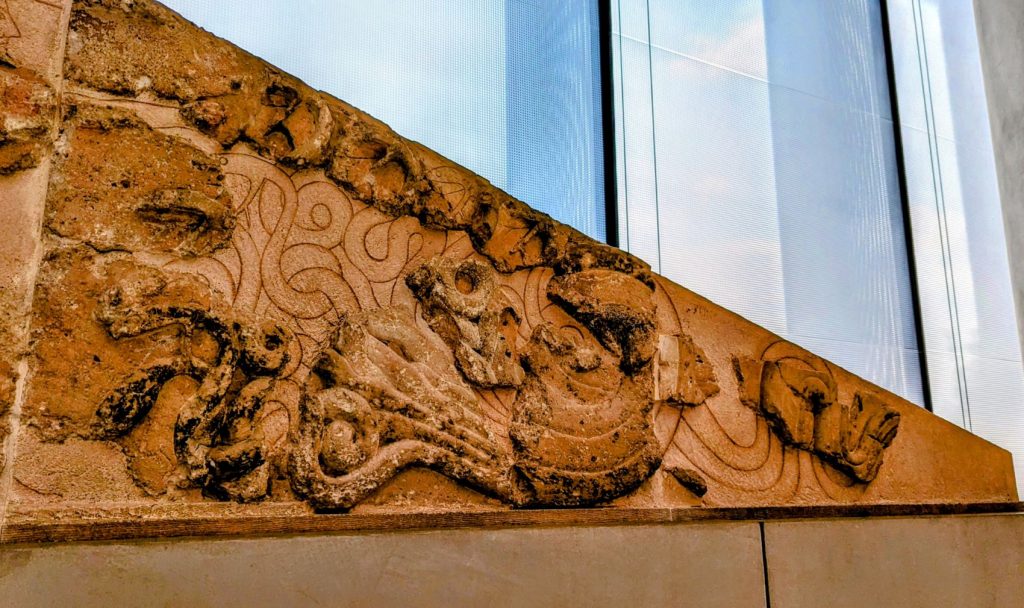
This next one was perhaps my favorite. Poseidon is fighting with the giant Polybotes during the Gigantomachy, the war between the giants and the gods. The story from Wikipedia:
“Polybotes was one of the Gigantes (Giants), the offspring of Gaia, born from the blood that fell when Uranus was castrated by their son Cronus. According to the mythographer Apollodorus, Polybotes was crushed under Nisyros, a piece of the island of Kos broken off and thrown by Poseidon:
Polybotes was chased through the sea by Poseidon and came to Cos; and Poseidon, breaking off that piece of the island which is called Nisyrum, threw it on him.
The first-century BC geographer Strabo also records the story of Polybotes buried under Nisyros (or Kos itself):
They say that Nisyros is a fragment of Cos, and they add the myth that Poseidon, when he was pursuing one of the giants, Polybotes, broke off a fragment of Cos with his trident and hurled it upon him, and the missile became an island, Nisyros, with the giant lying beneath it. But some say that he lies beneath Cos.”
I mean, if you want to defeat a giant, what better way than throwing an island on top of him?
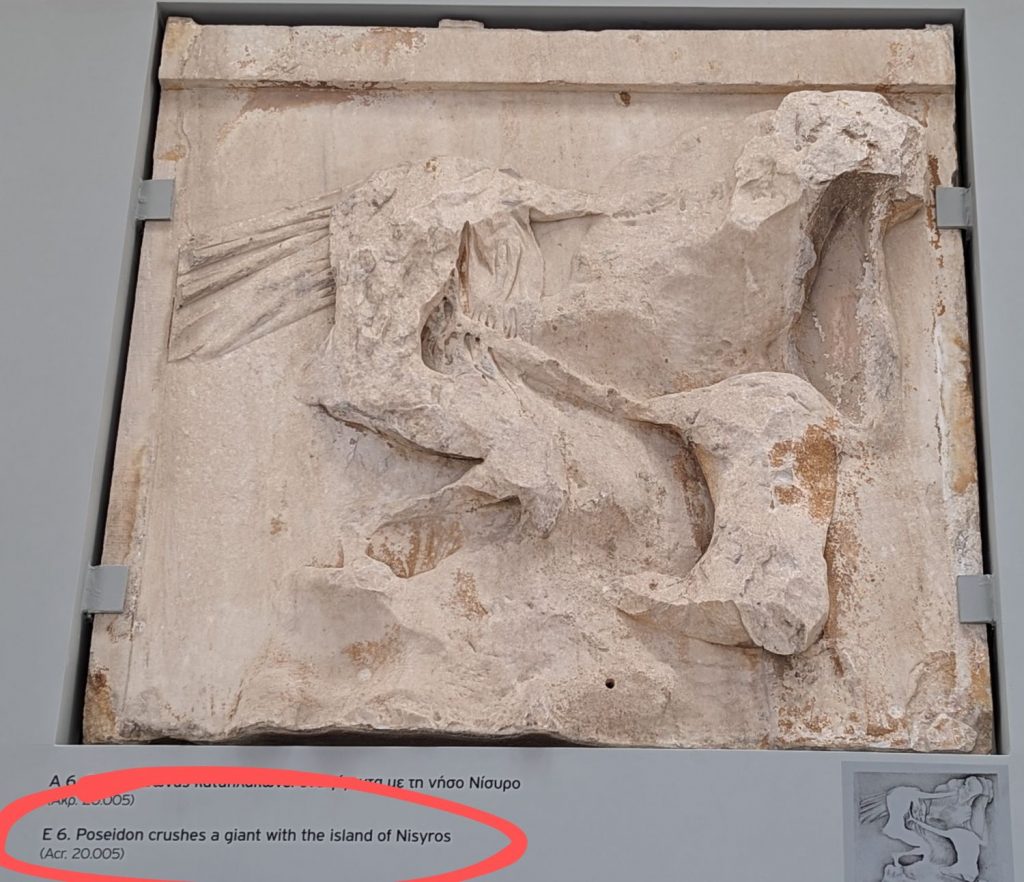
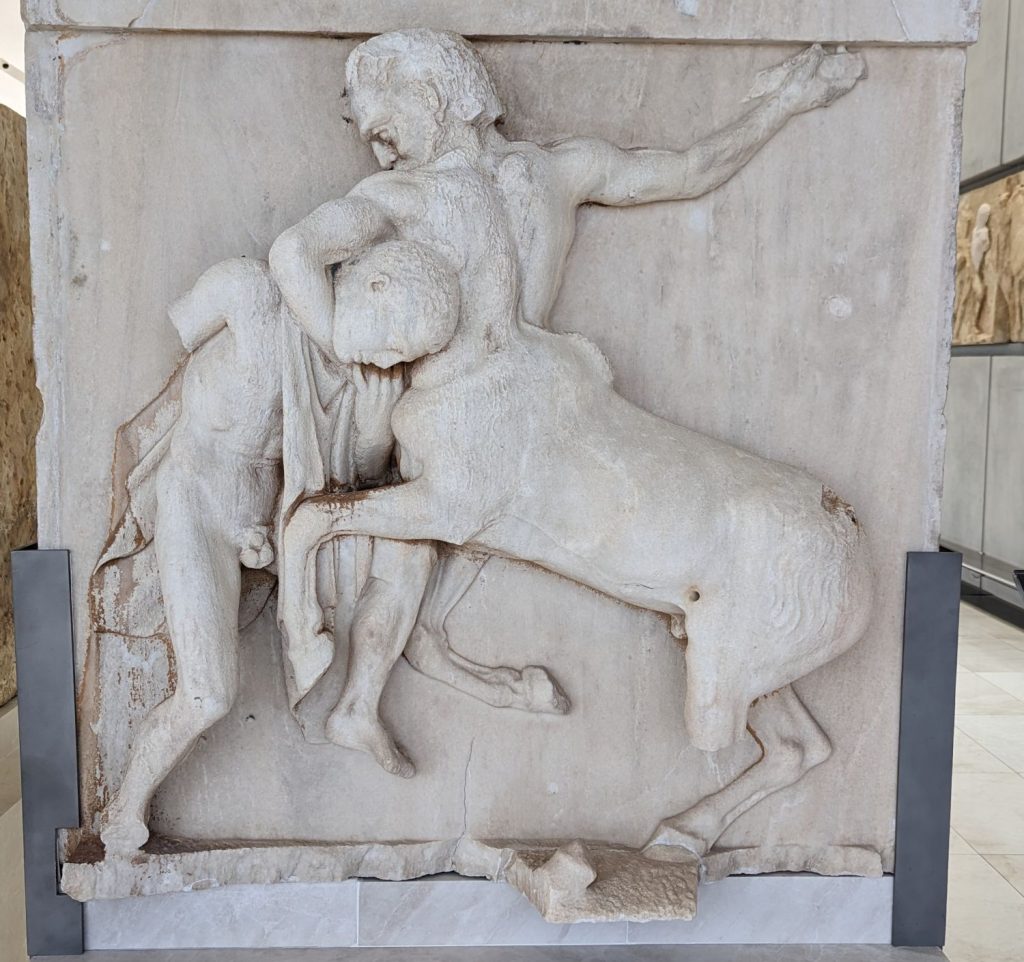
We did some shopping then ate at an Italian (yes, Italian, don’t judge) restaurant that night.
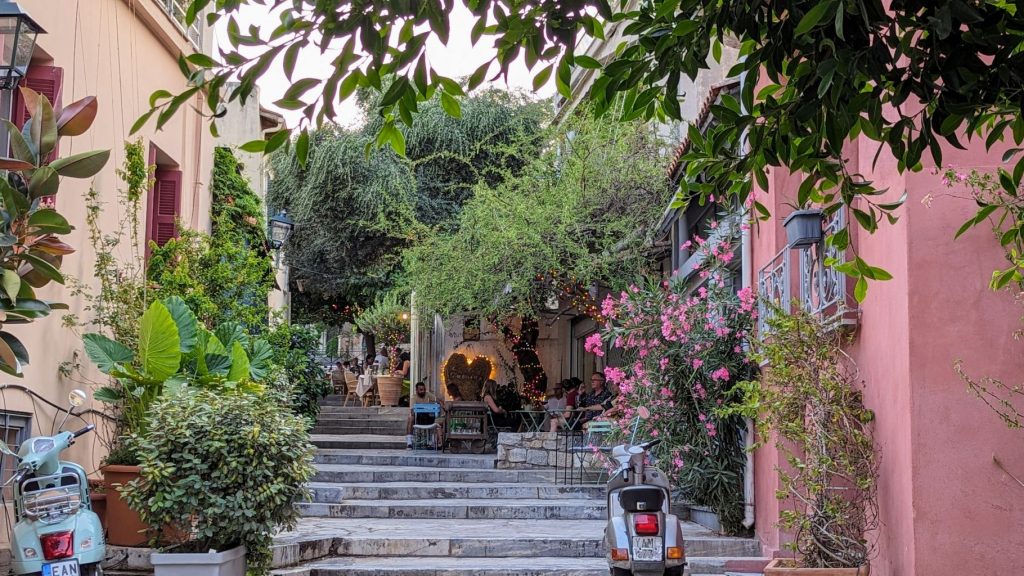
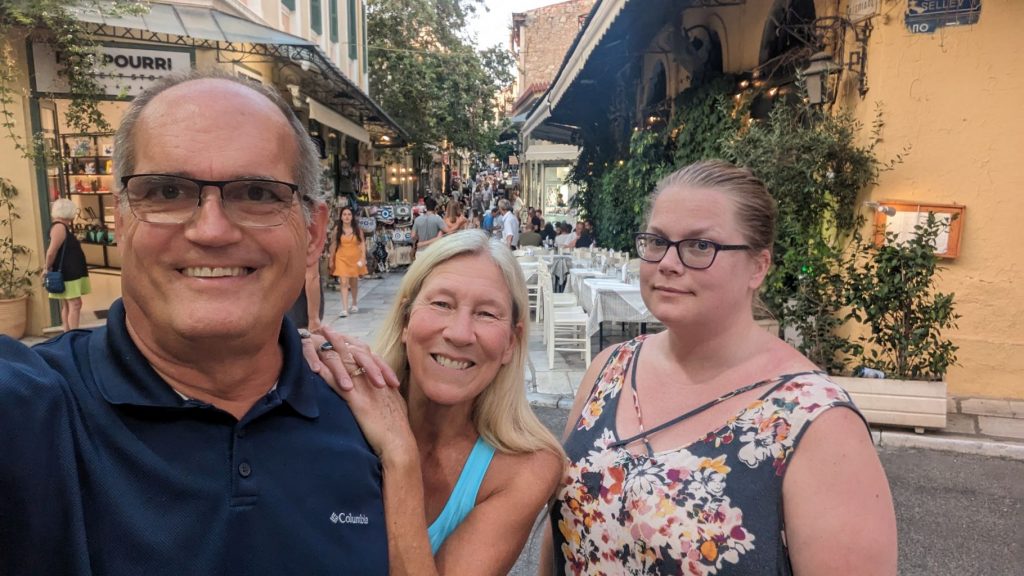
(VEGAN ALERT, SCROLL PAST FAST NOW!)
We hired a driver to take us back to Lefkada on July 11. This time we ate dinner at a Greek restaurant, and it was hands-down one of the best dinners I have ever eaten.
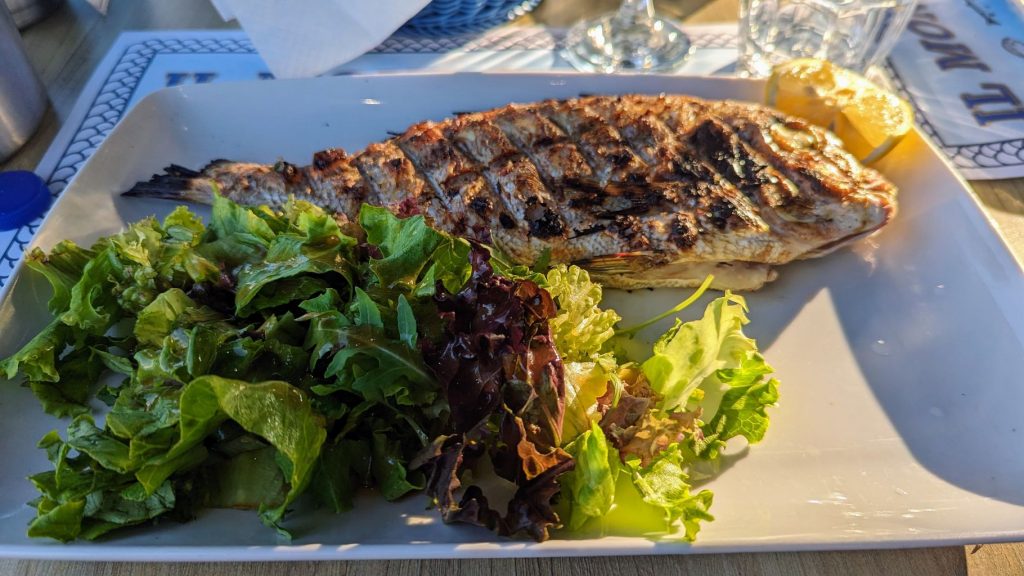
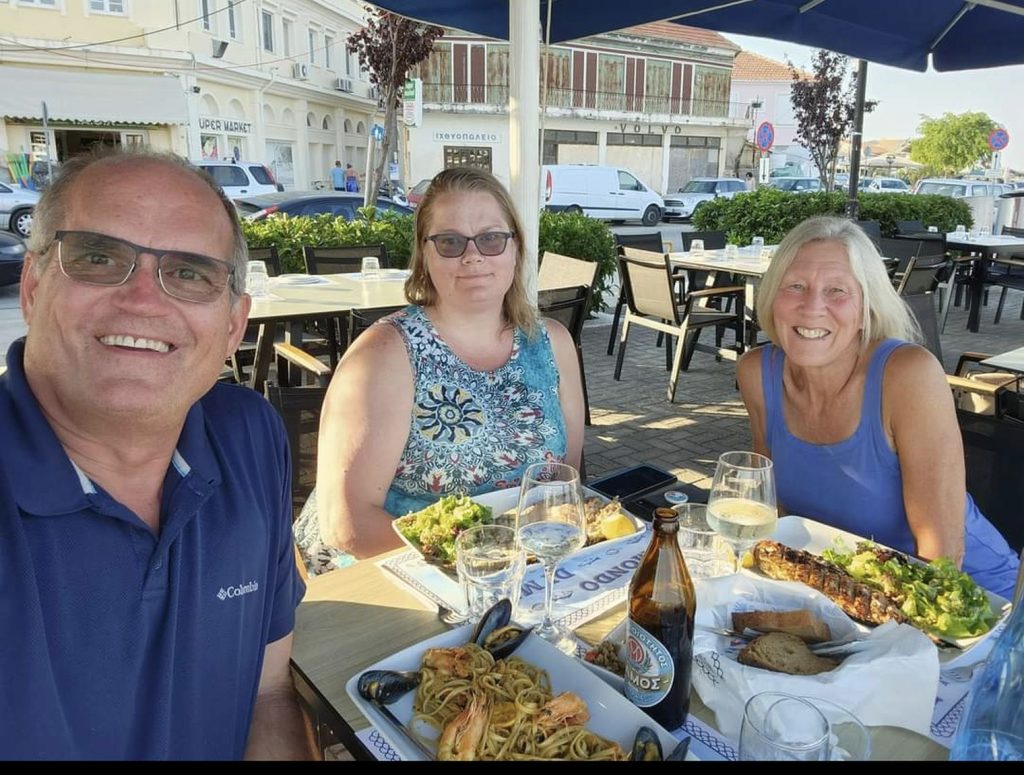
Okay, now we are back to the part where we visit Antipaxos. First, we had to go through the Lefkas Canal. [Yes, I am going to use Lefkas and Lefkada interchangeably for kicks and giggles. I am not, however, going to use Leukas. But here is a bit about the name: Lefkada owes its name to the white rocks (lefkos in Greek means white) that characterize the southern part of the island. The name was first given to the ancient city of Lefkada and then to the entire island. And just to add a bit of mythology, apparently poetess Sappho jumped into the sea from these white rocks as she couldn’t endure the torture of her love for Phaon.]
Lefkada, as just about everywhere else, has an interesting history. Here are some highlights. (Feel free to skip the next long paragraph if the history is not of interest to you.)
The Corinthians colonized the island during the 7th century B.C. and built the new town of Lefkas and started the construction of the canal that separates Lefkada from the mainland in 650 B.C., turning Lefkada into an island. Lefkada played an important role in the Persian Wars and participated in the battles of the other Greek cities. It also participated in the Peloponnesian War (431-404 B.C.) helping Corinth, which was on the side of the Spartans’. Fast forward to 1294, Lefkada fell under Sicilian rule when the bishop Nikiforos Angelos gave the island as a dowry to his daughter who married the Sicilian Giovanni Orsini. The Orsini family ruled Lefkada until 1331 and they also built the Castle of Agia Mavra. Lefkada came under domination of various dynasties until 1479, when the Turks took over. They ruled until 1684. Then the Venetians took over. This was an important period in the history of Lefkada. The economy flourished thanks to the development of trade and navigation. Then Napoleon Bonaparte and his troops conquered Venice in 1797, and Lefkada became part of the French State. Then the Turks, Russians, and English took over. Back to French rule in 1807. Back to English rule in 1810, with the occupation becoming official in 1815. This is when the Greek language became official, new road networks were built, and water supply improved. Official English protection (not occupation) lasted until 1864. On May 21, 1864, a treaty was signed proclaiming the unification of the Ionian Islands with the independent and newly formed Greek State.
Back to the canal. For those who have been following us, you know that, while I know diddly squat about engineering, I have a *huge* appreciation for it. . . . pretty much an awe factor. The Lefkas Canal bridge did not disappoint.
We didn’t know how the bridge opened, but we knew that it opened at the top of the hour. Happily, Jennifer and I happened to be walking to the beach and passed by the bridge a few minutes before it was scheduled to open. We stopped to see how the bridge worked. We could tell it wasn’t a lift bridge. I wondered if it was a submersible bridge. After waiting a few minutes, sirens started blaring. Moments later the sides of the bridge started lifting, thus preventing cars from crossing. The sides rose until they were perpendicular to the road. Then – who knew? – the bridge started to rotate. At first I thought the boats would pass on either side of the bridge, but instead the bridge moved off to the side so boat traffic could go by in both directions. The bridge is open for 15 minutes, giving many boats plenty of time to get through.
But there’s more! Versatility. If there are just a few boats going through, the operator just lifts one side of the bridge and lets them pass. No need to rotate.
But back to the beach where Jennifer and I were headed. The first two pictures are of the beach next to the beach we visited, but I like them. I was pretty much one big stretch of coastline with two beaches.
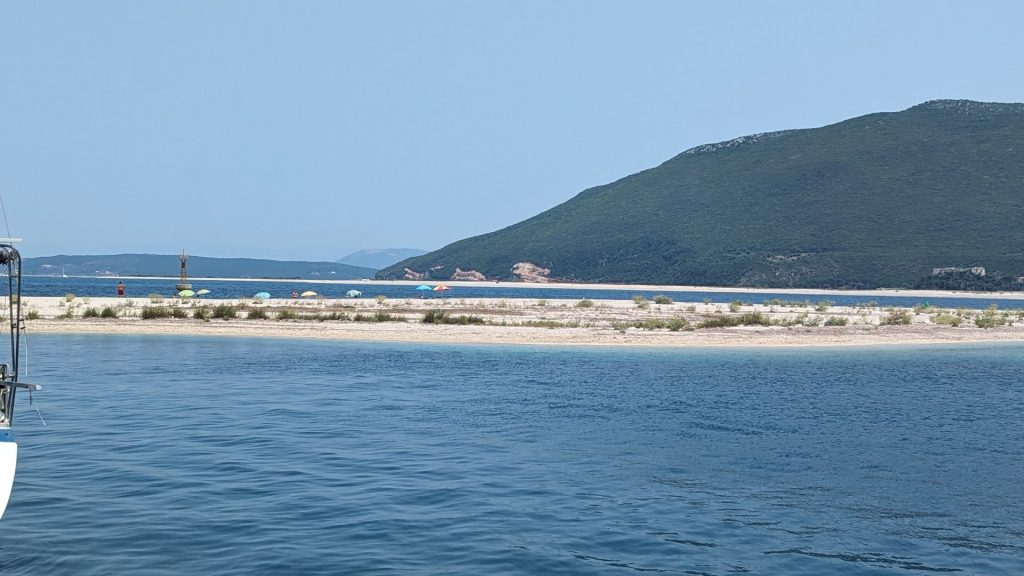
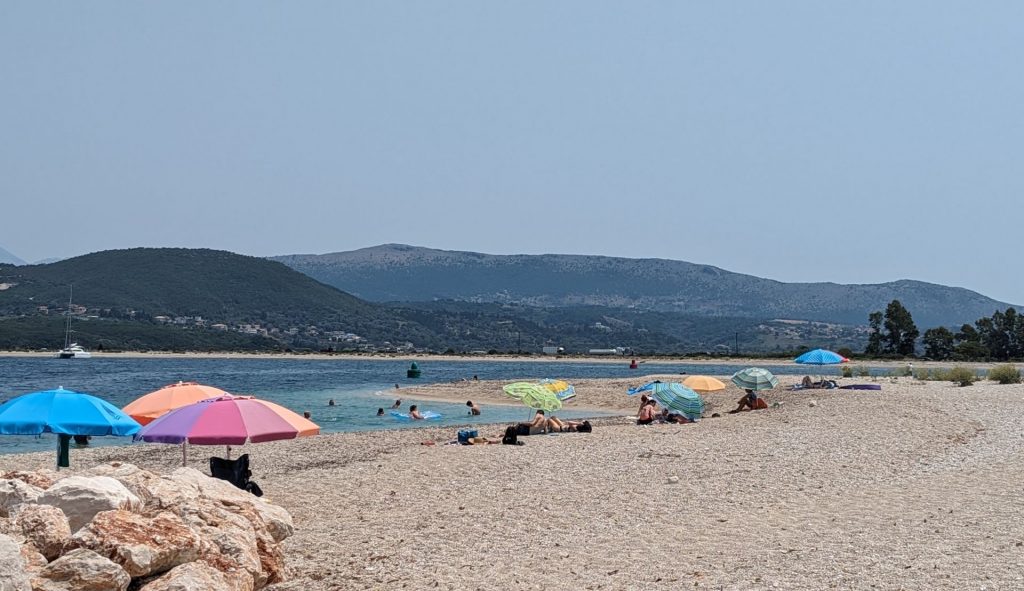
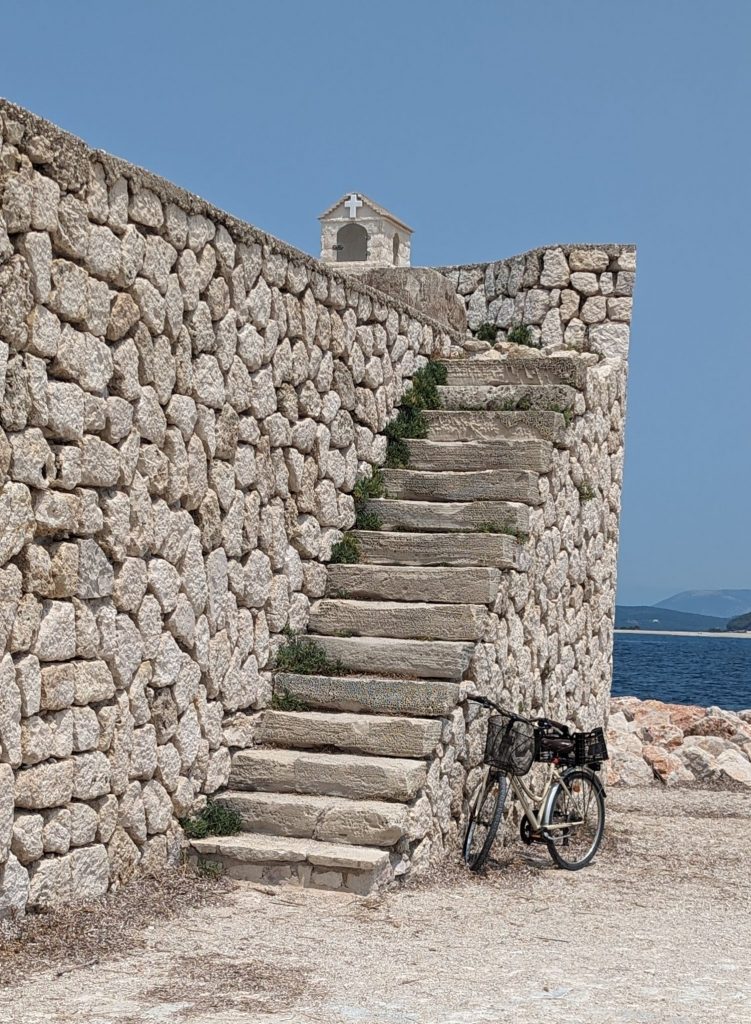
This next picture isn’t of the beach either, but it is the view looking back at the lighthouse (and the canal) on the way to the beach. The lighthouse was built in 1861 and originally used oil as a source of energy. In 1889 the old mechanisms were replaced with an automatic acetylene torch and in 1990 it became electronically operated. Yeah, that last step took a minute!
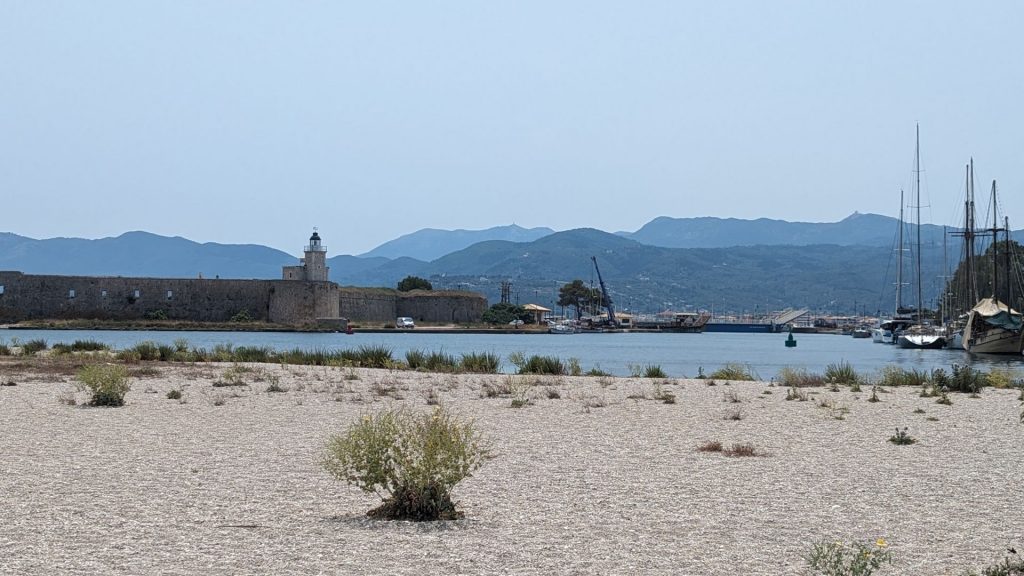
Just a few more steps to the beach . . .
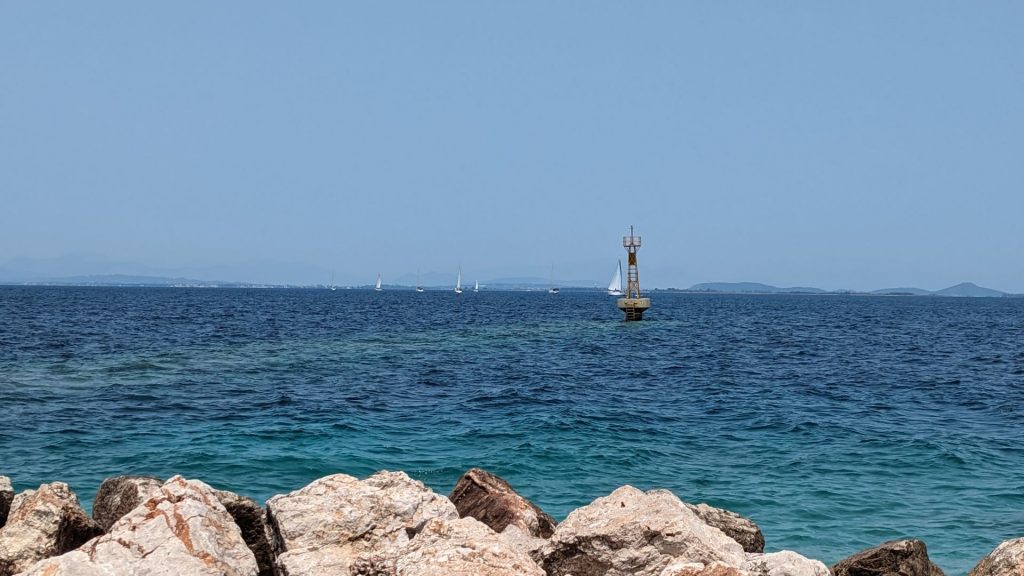
After all of that buildup, I only have one picture of the beach. Crazy! It was a nice beach and the water felt great! It was somewhere between a sand beach and a pebble beach. Maybe large grains of sand?
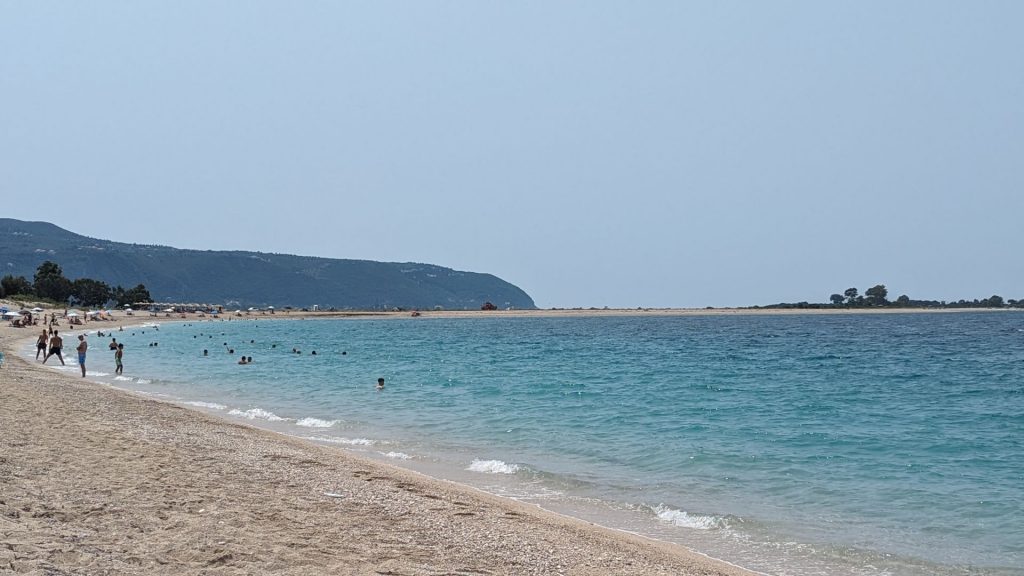
We left for Antipaxos the next day (July 13). We got to see the canal bridge do its thing up close and personal.
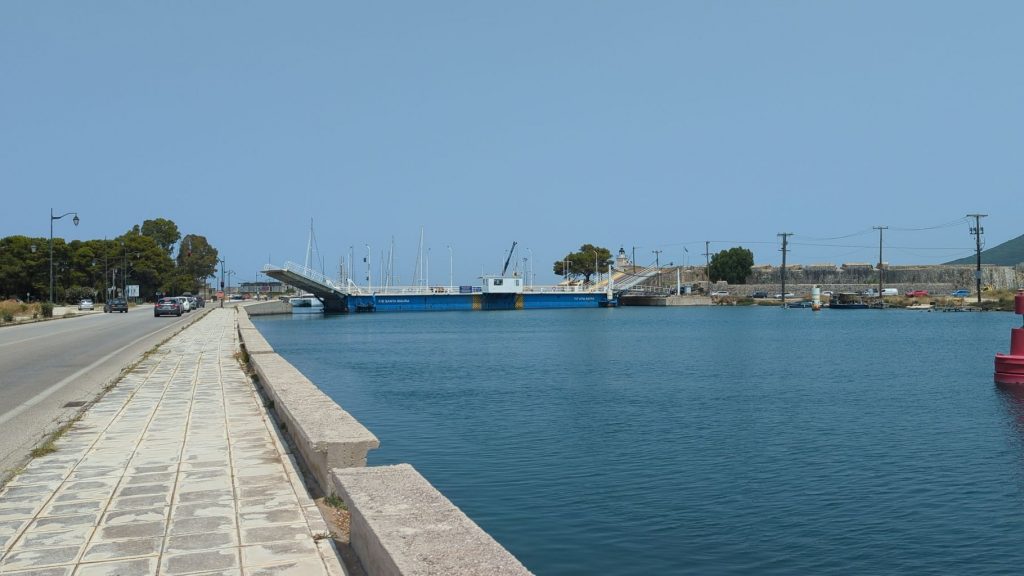
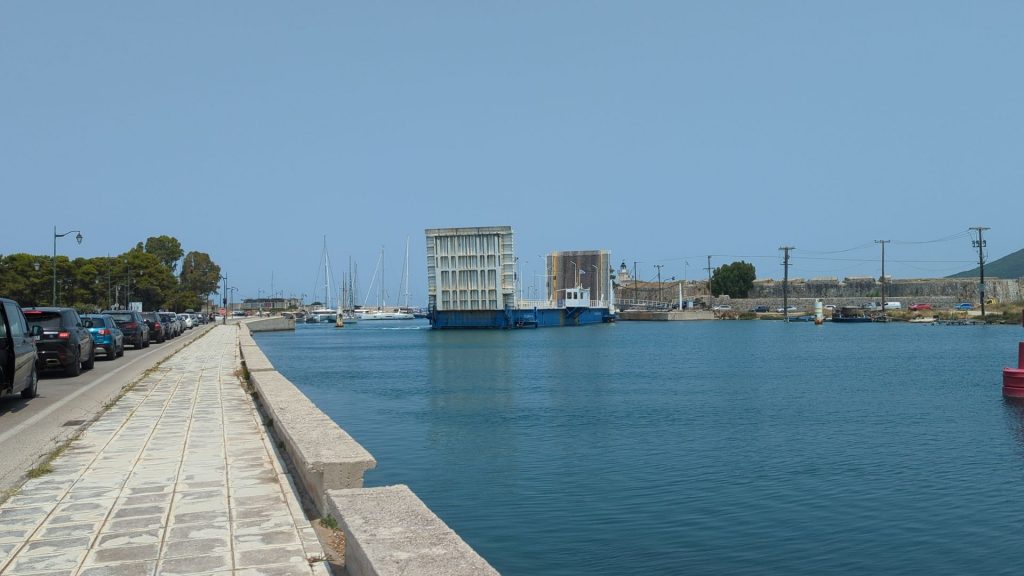
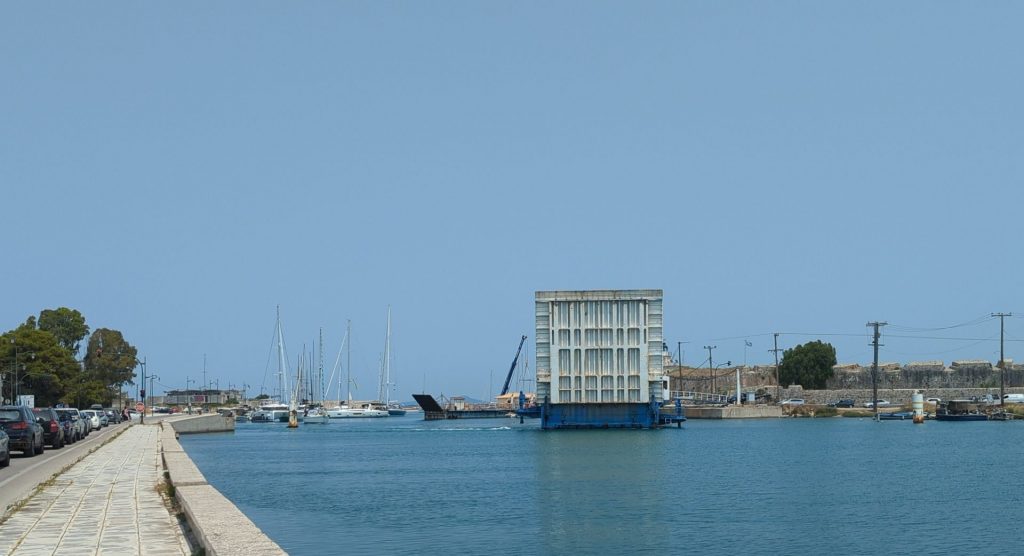
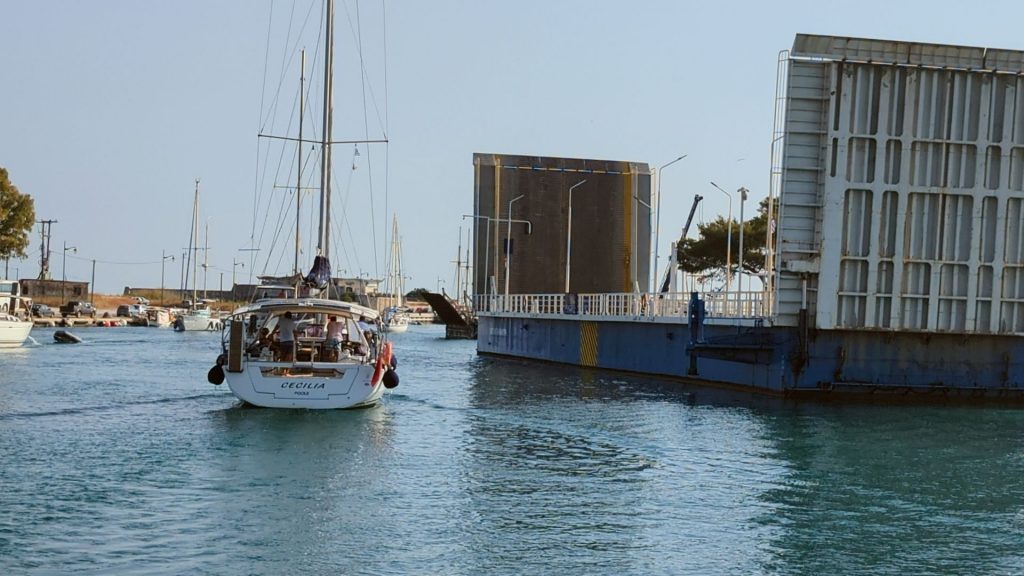
The only thing we did on Antipaxos was visit and stay overnight at Vrika beach. It is a fabulous beach (I am trying to use something other than “beautiful”)! We also stopped at the taverna for a cold beverage.
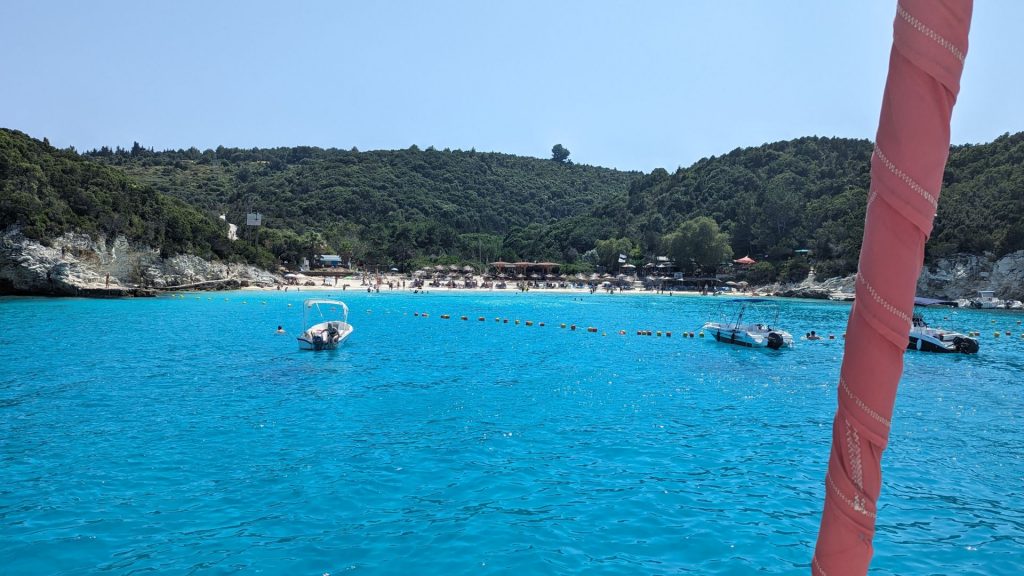
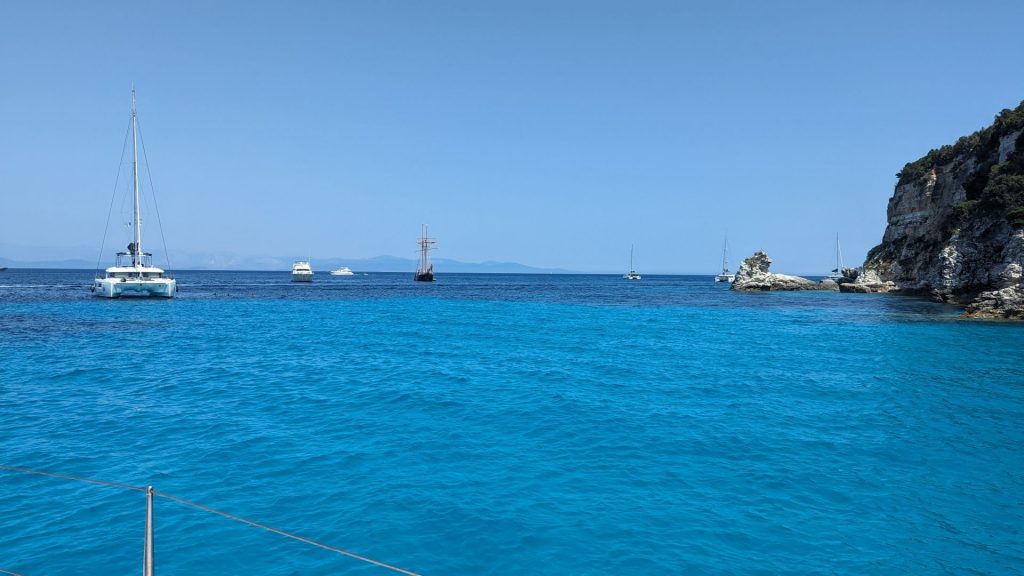
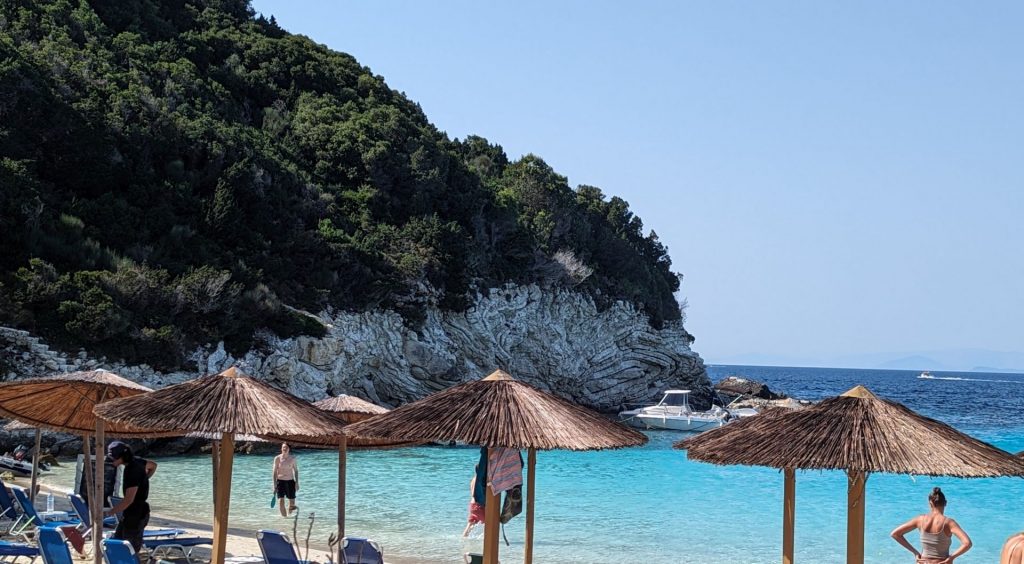
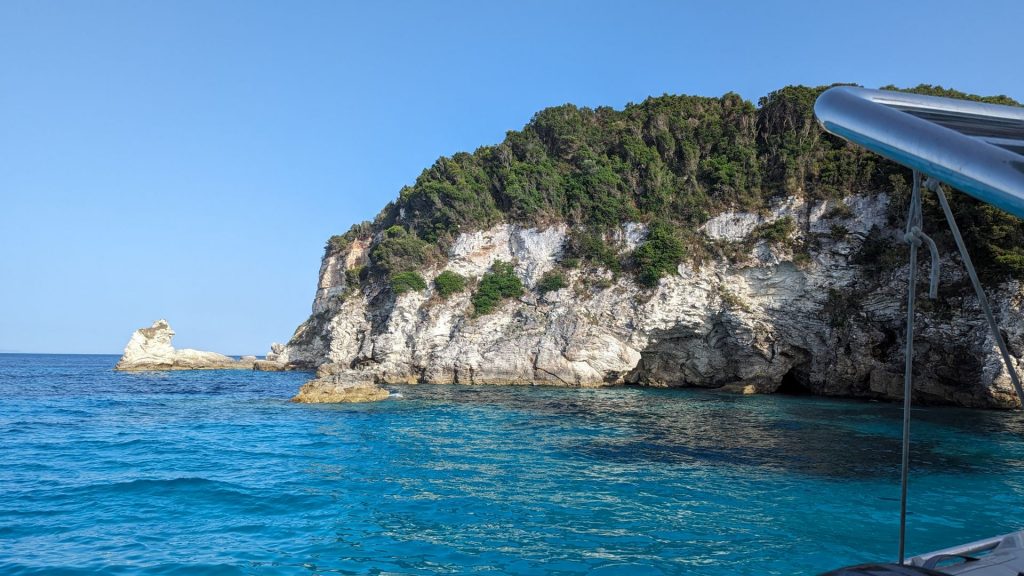
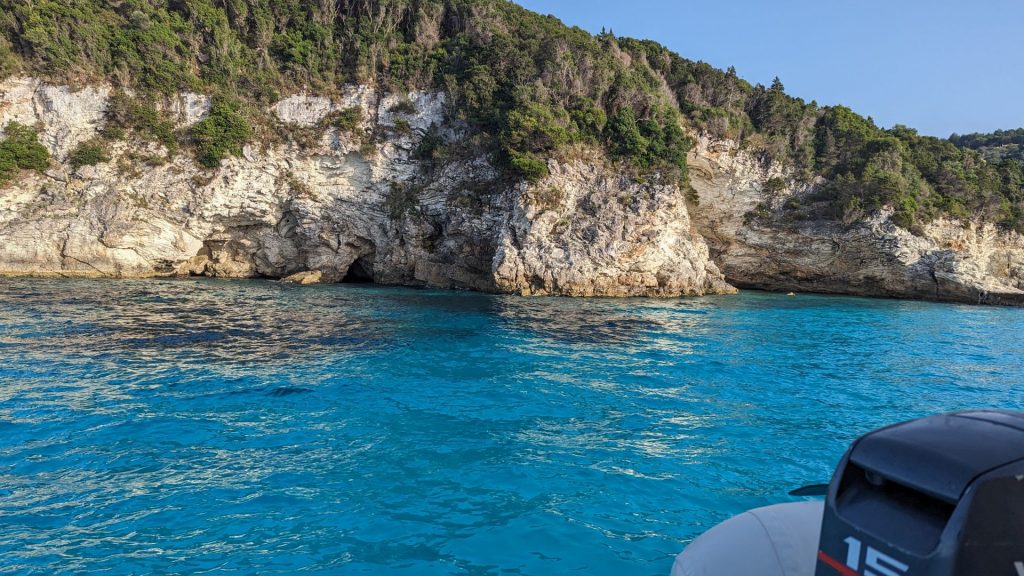
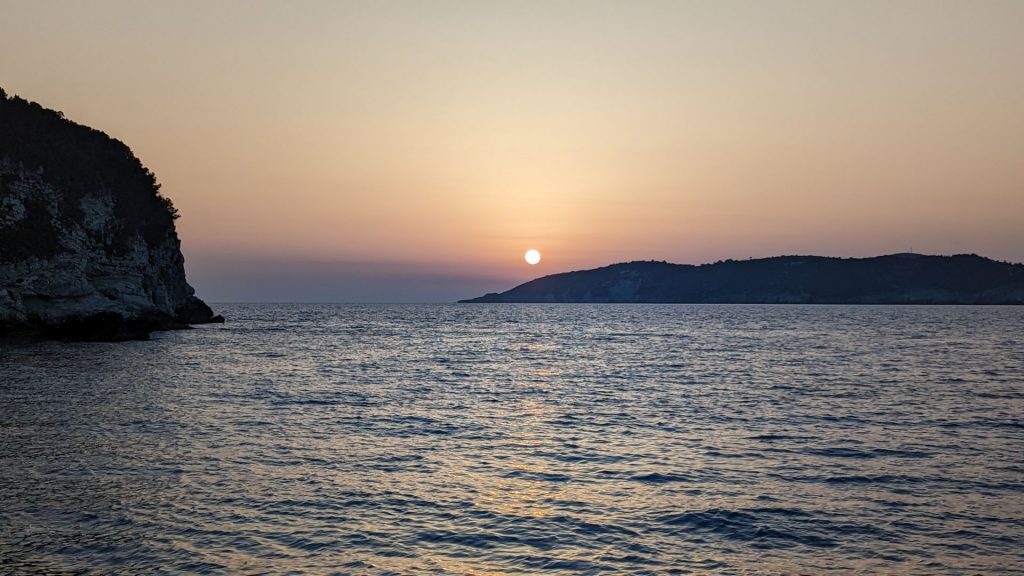
Our plan for the next day was to sail along the west coast of Paxos, described as a wonderland of caves, cliffs, and beaches. Not only did it not disappoint, it overwhelmed! Captain Michael drove near the shore the entire time so we could see things up close and personal. We only stopped to swim at one beach, Eremitis beach, but it was stunning with the high cliffs on the sides.
There are no cliffs at the bottom of the island but the view is still lovely. These pictures are sort of in the order we saw the landscape on our way north. The landscape was varied, but always a treat for the eyes.
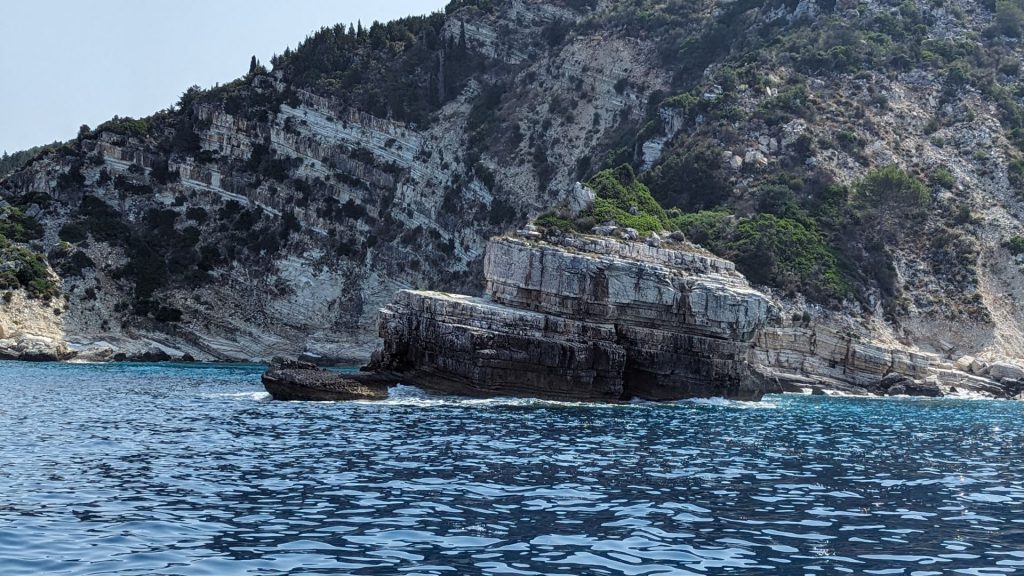
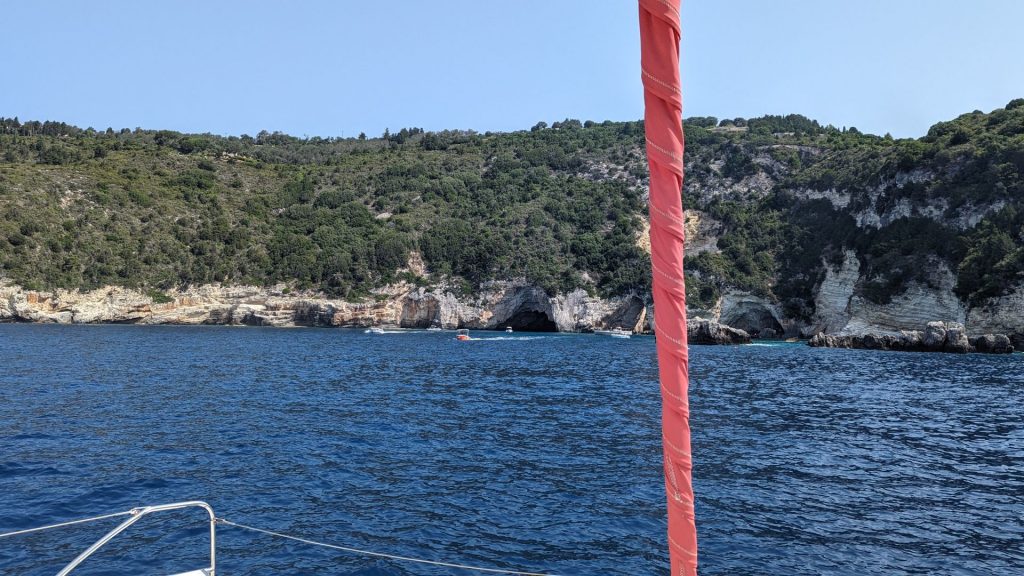
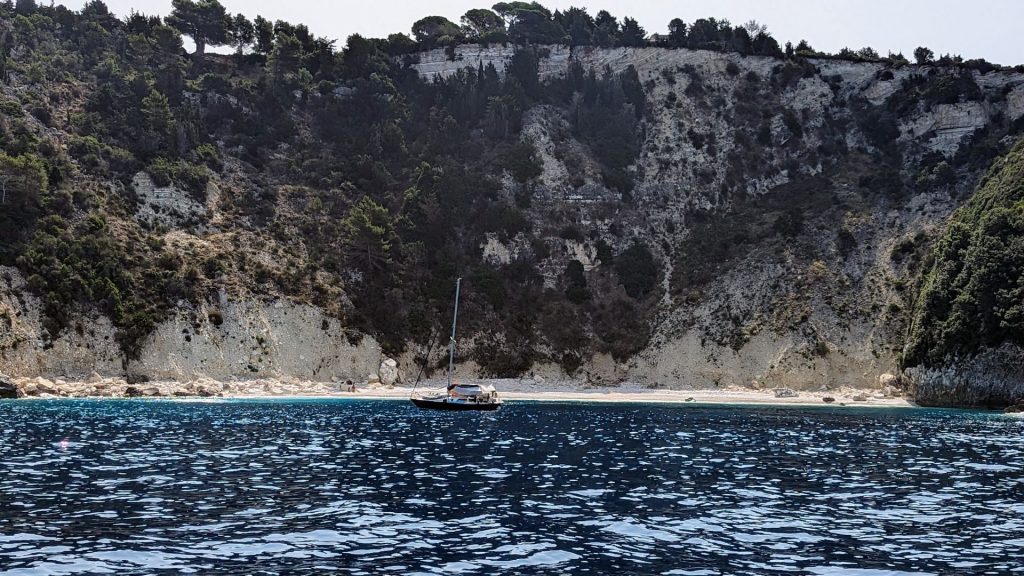
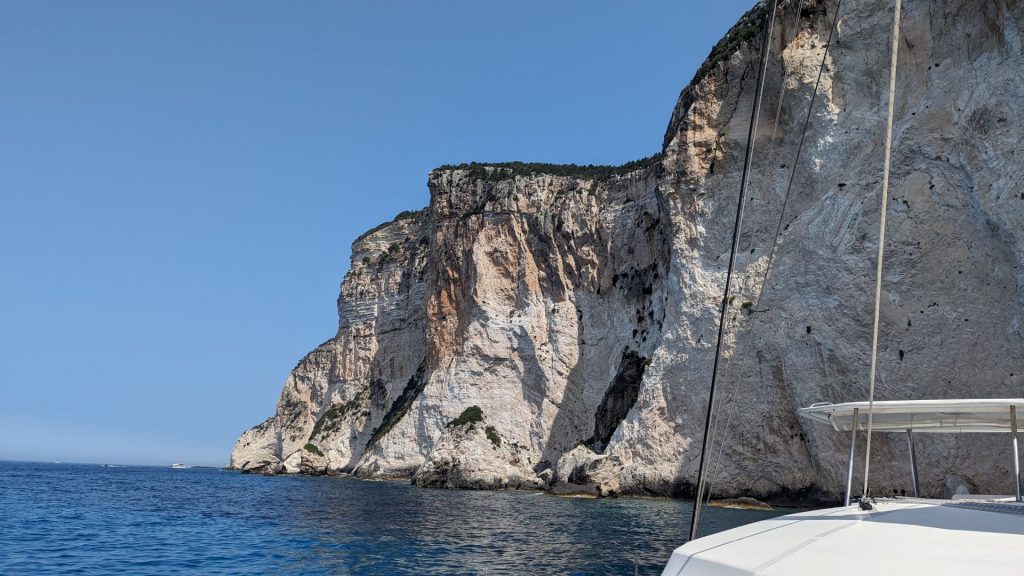
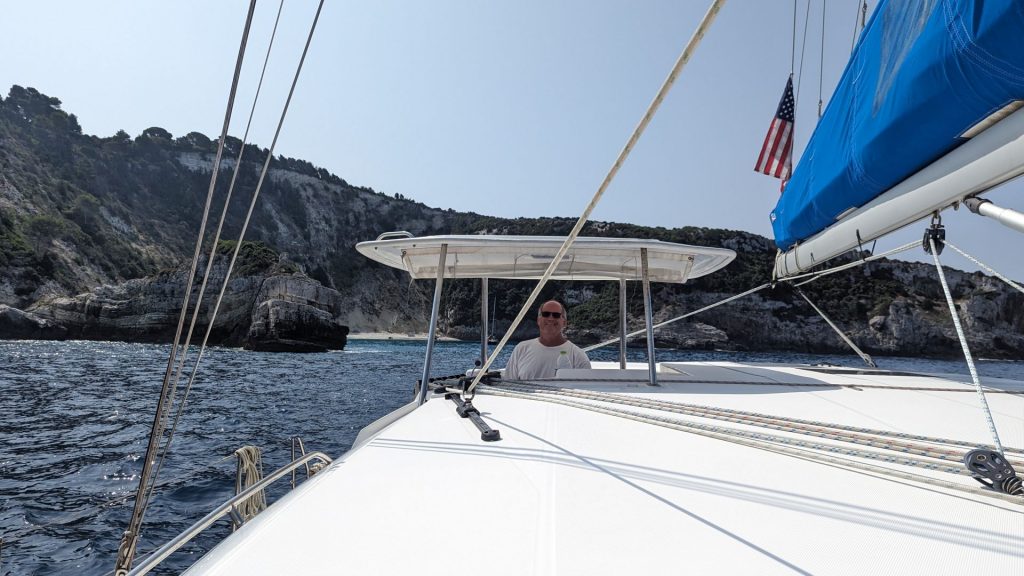
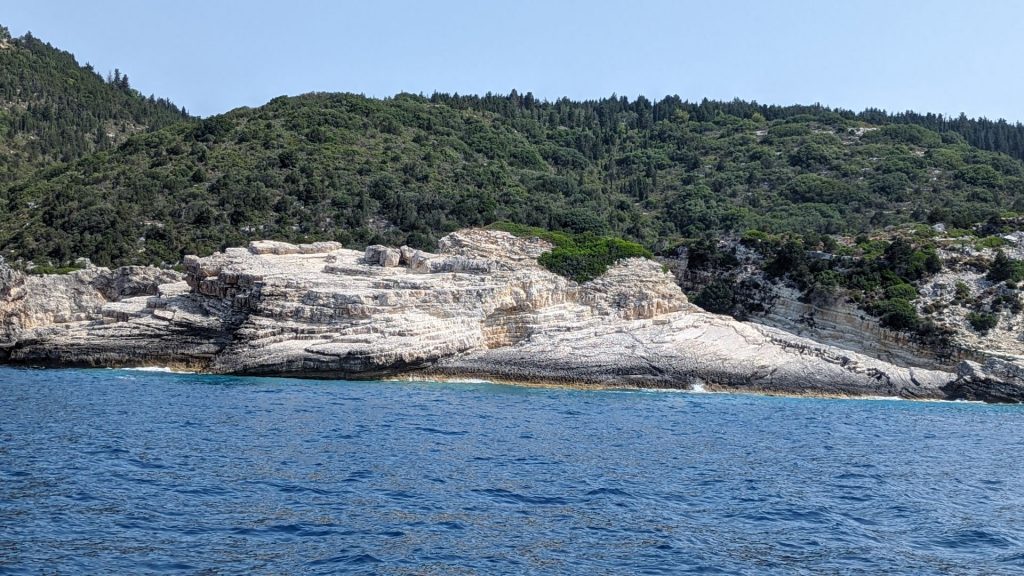
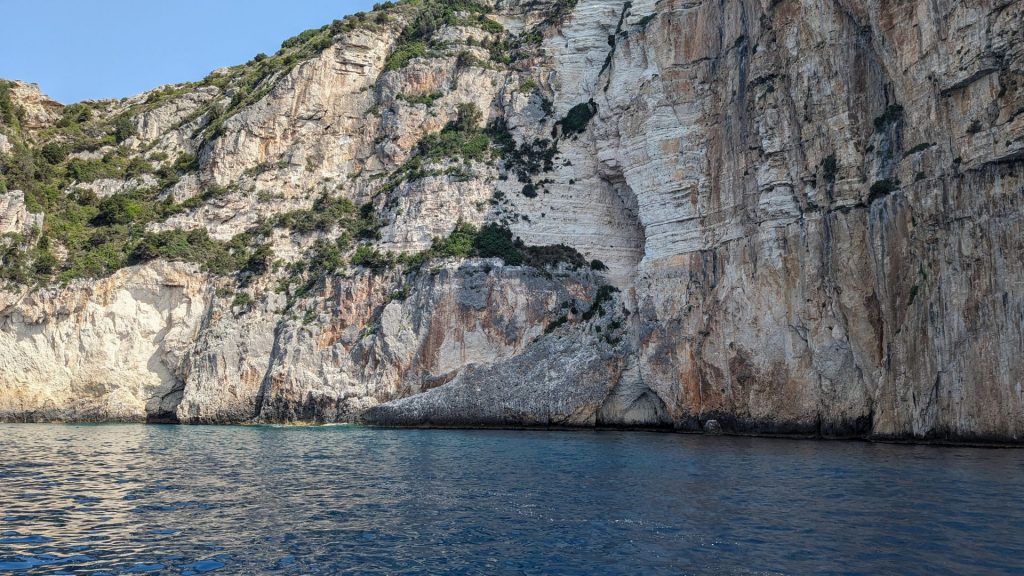
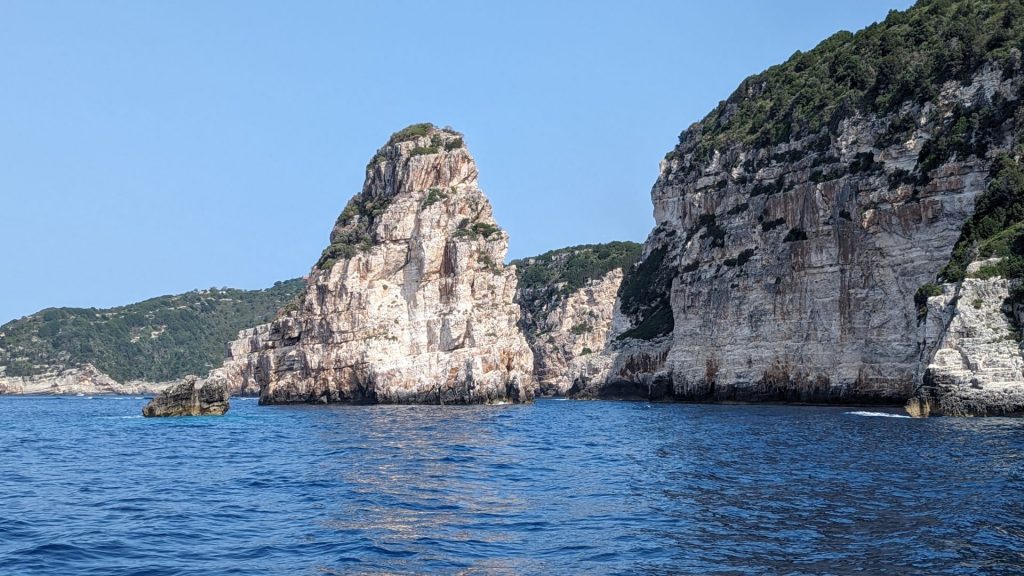
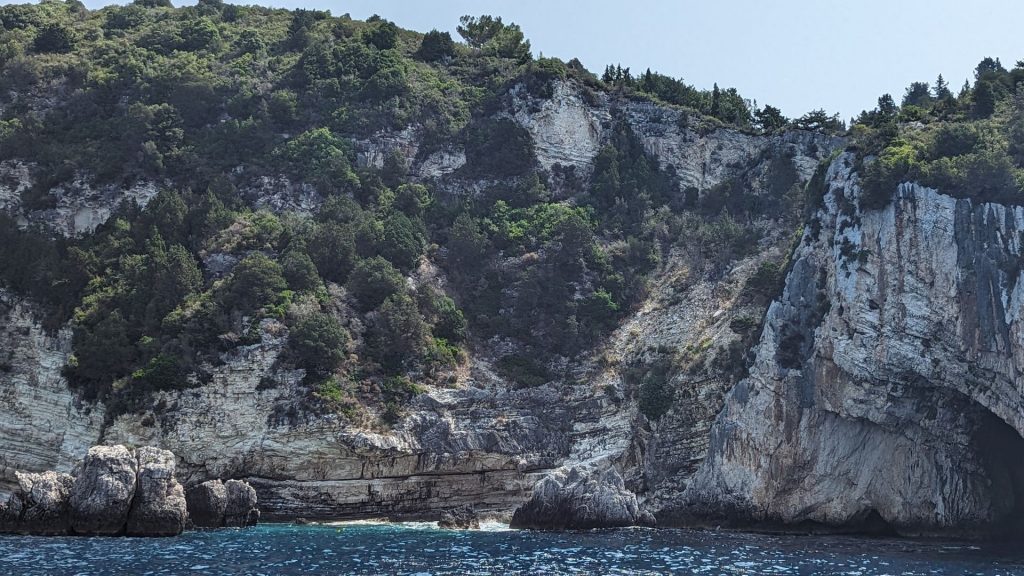
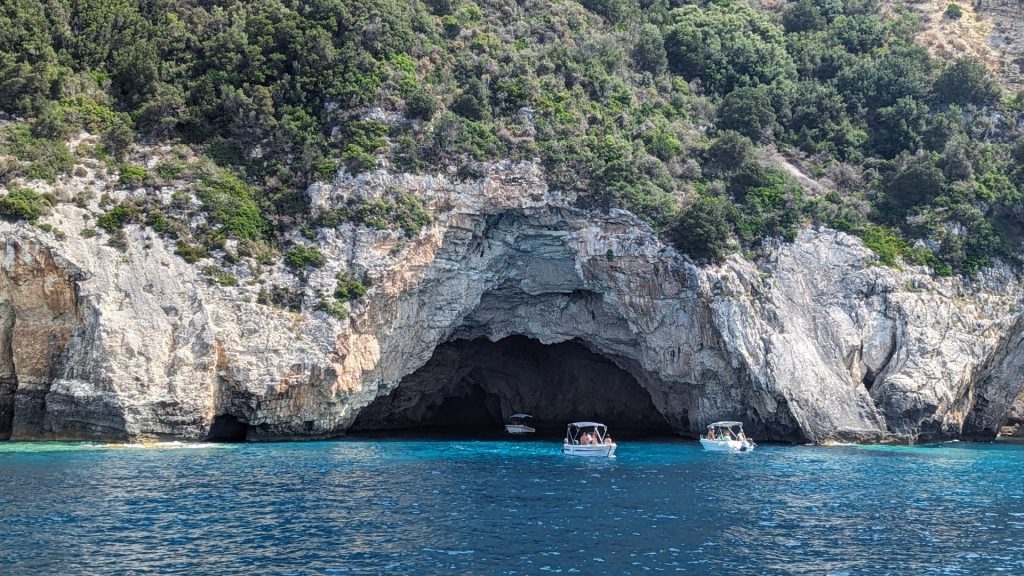
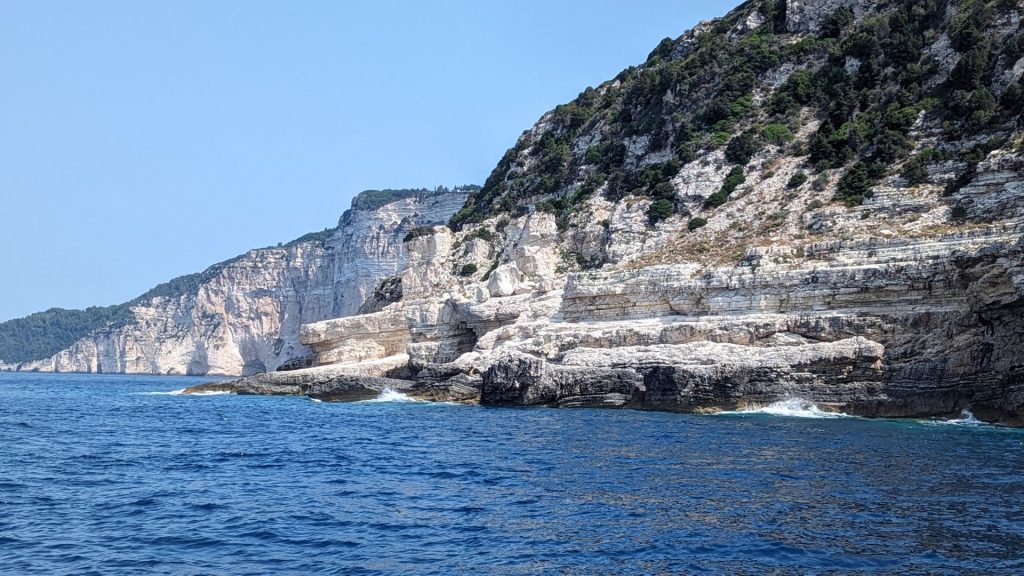
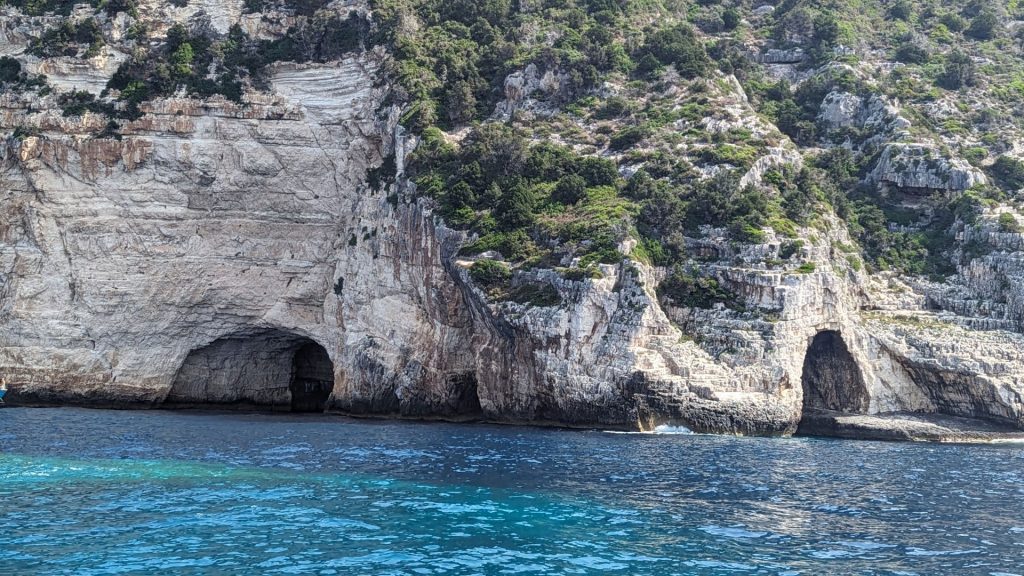
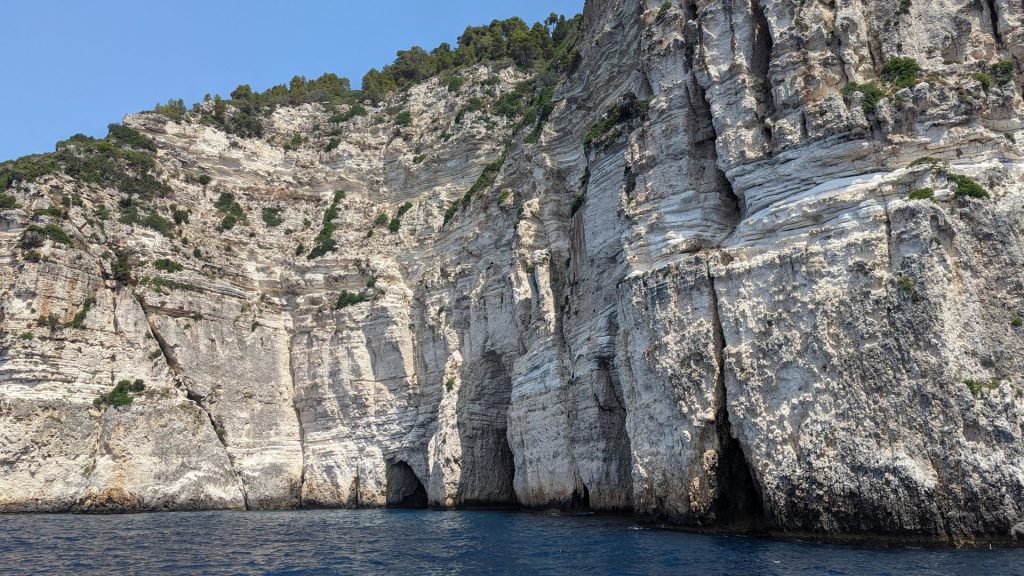
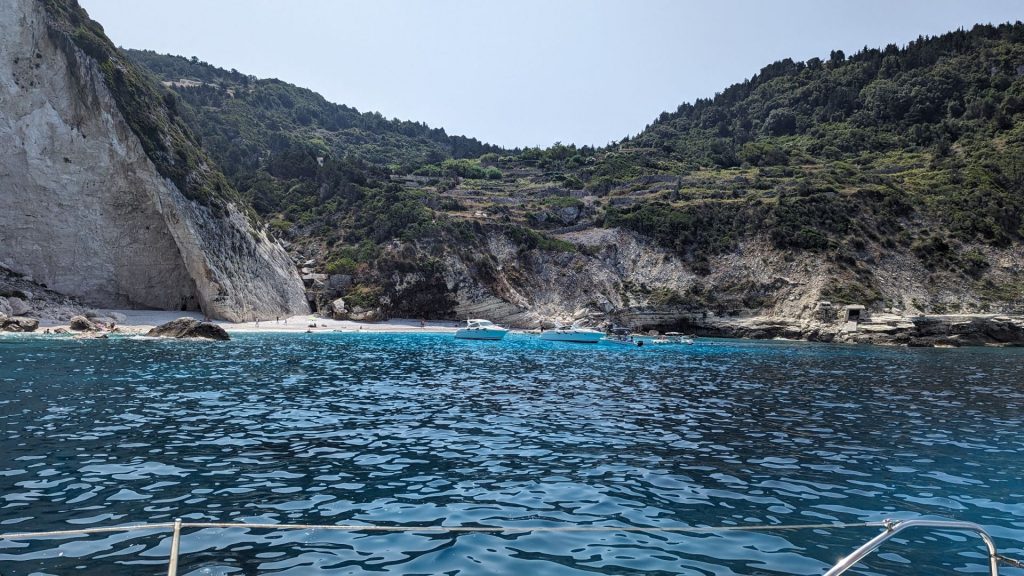
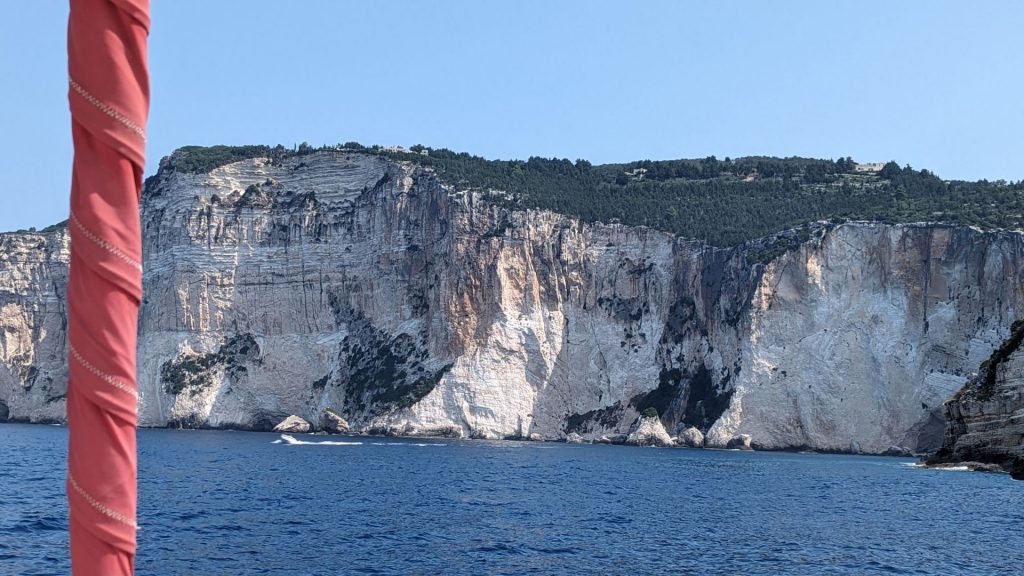
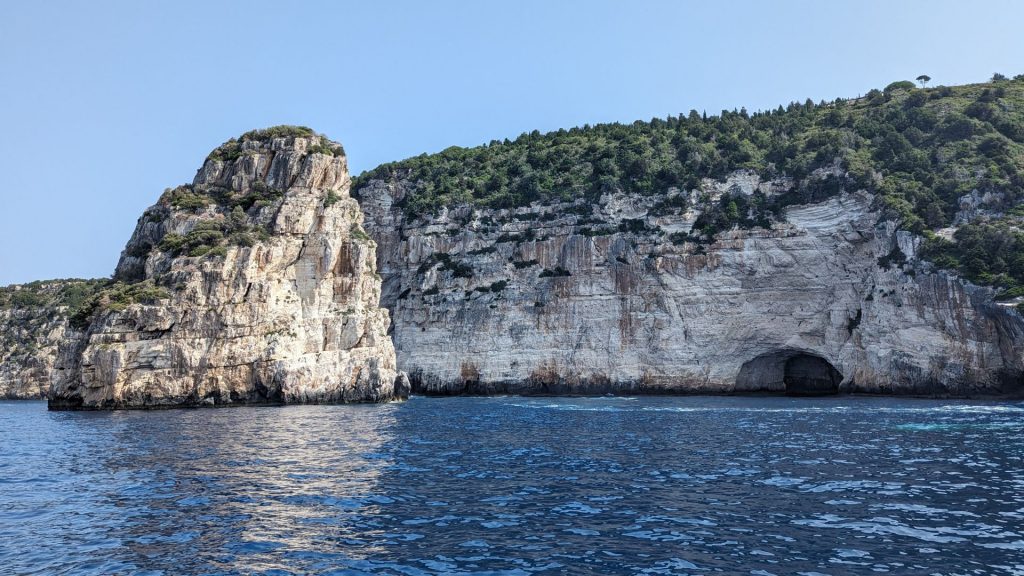
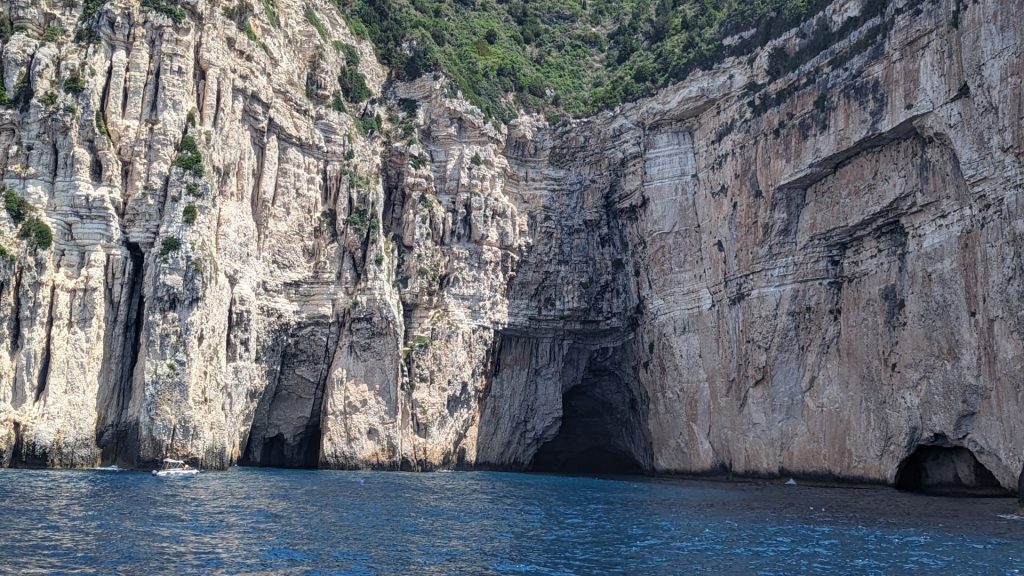
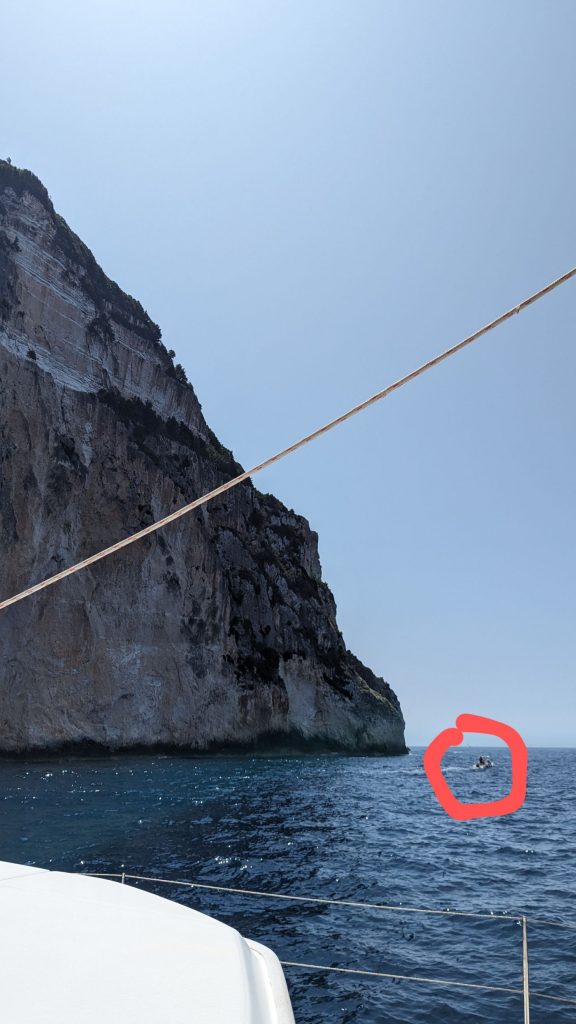
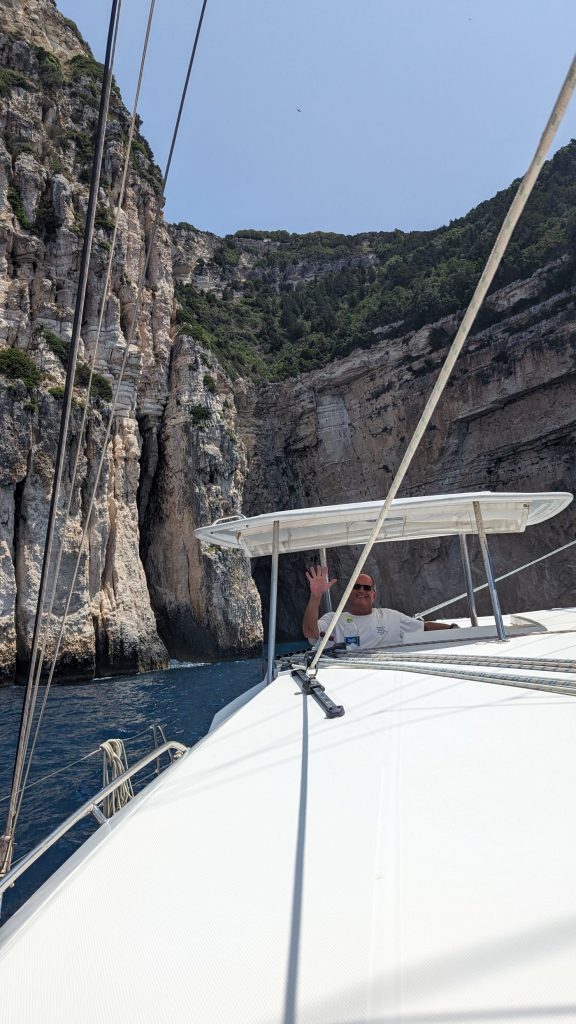
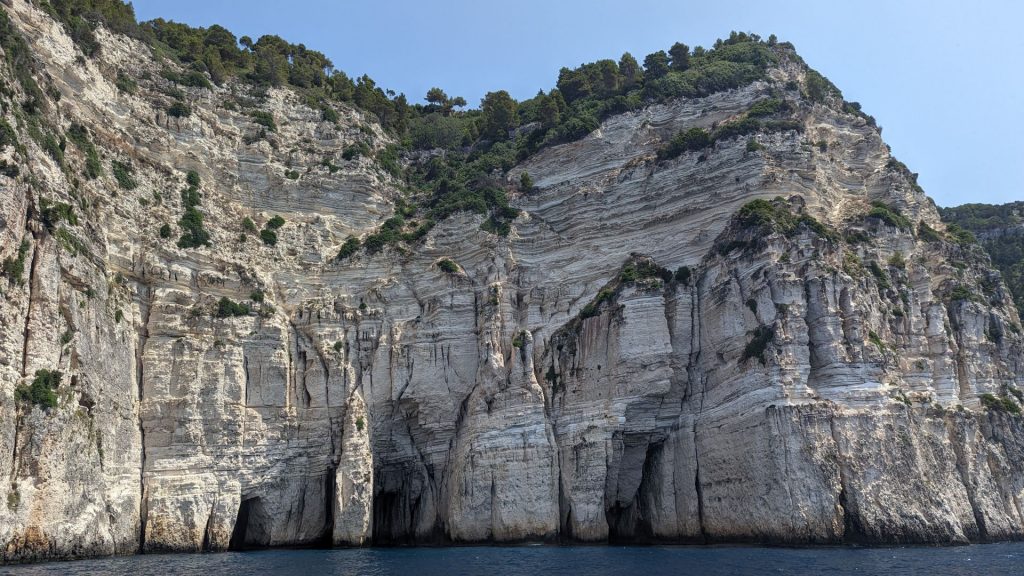
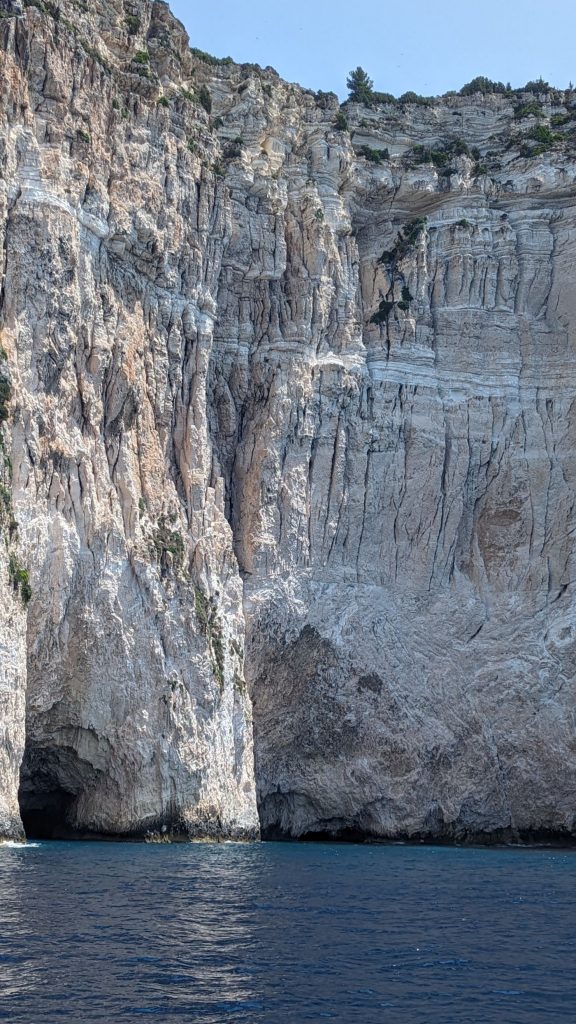
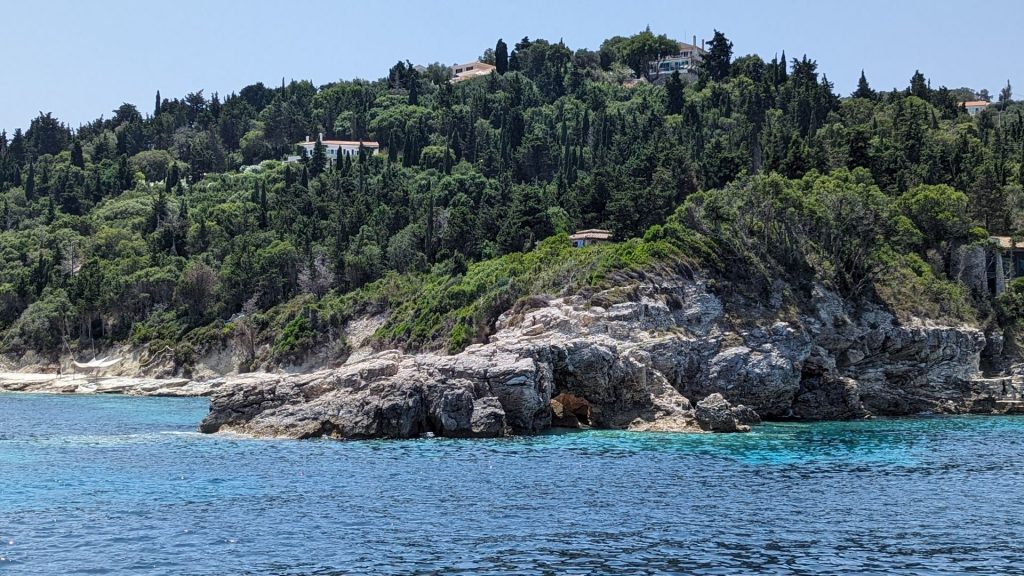
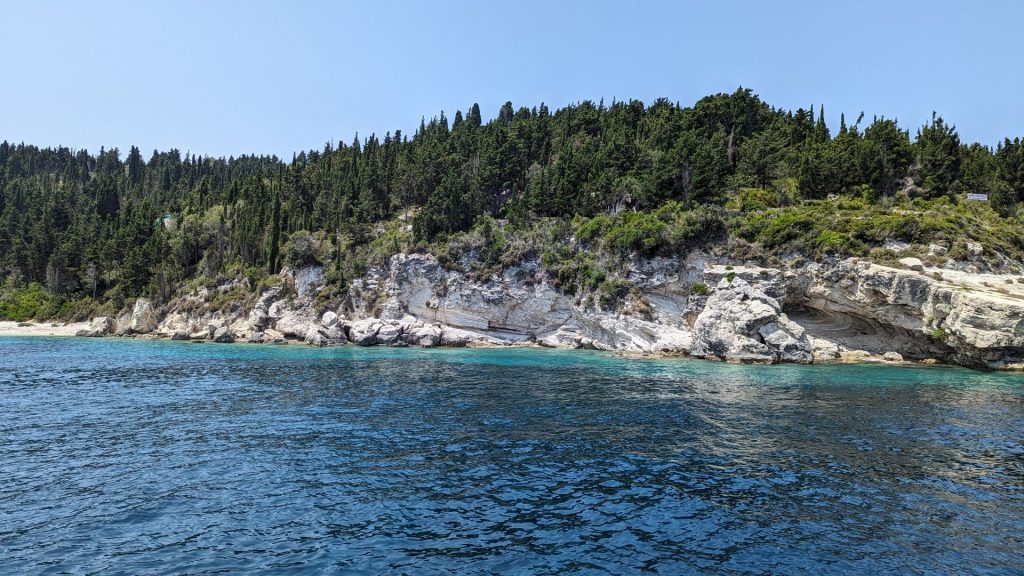
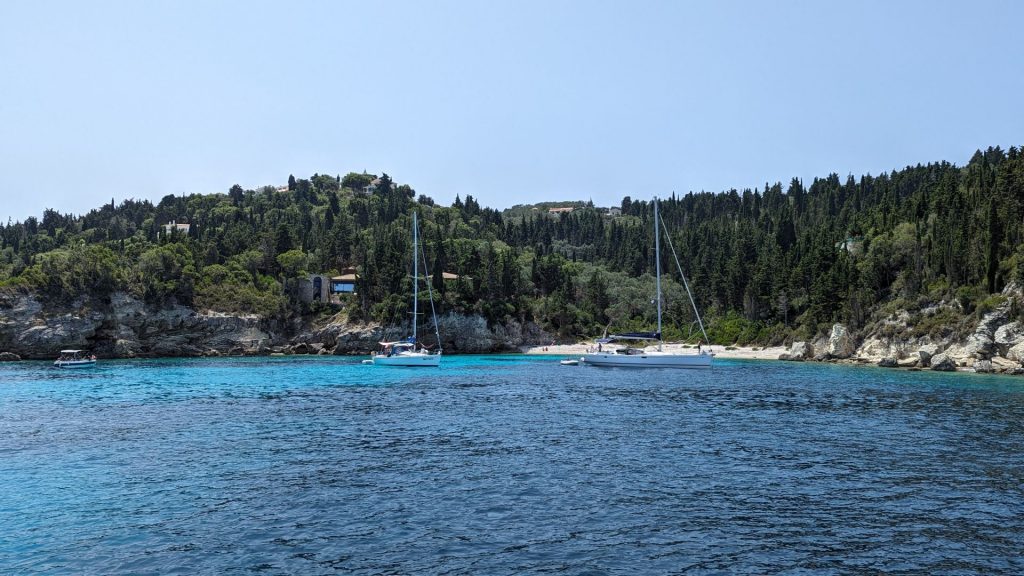
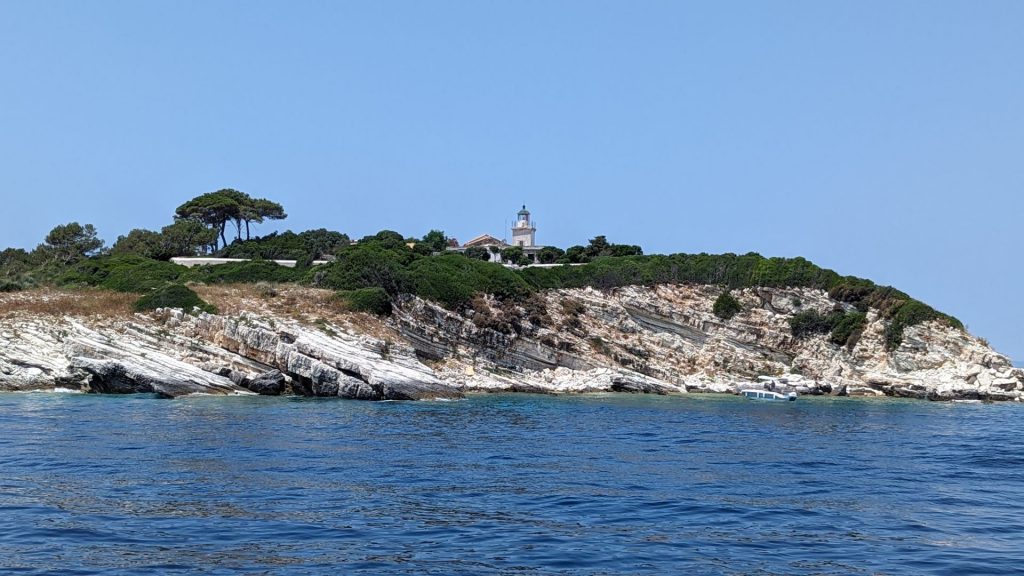
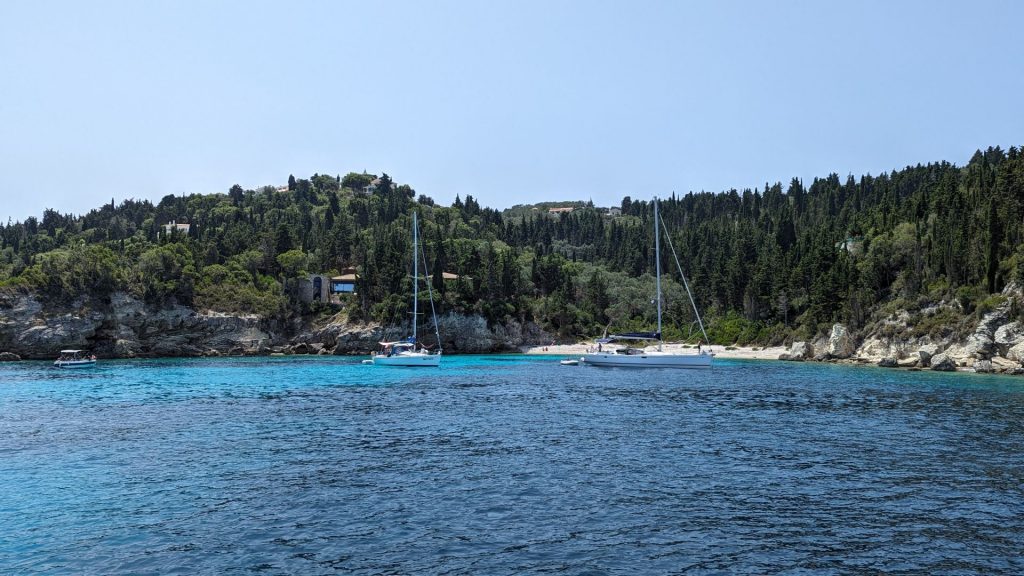
That’s it for today’s blog. We are already several days beyond this as I write. I will post again after Jennifer leaves us on the 21st. Ta-ta!!
